Microsoft’s Biggest Failures And Embarrassing Mistakes
From Introducing Half-And-Half Products And Abandoning Them To Calling Linux Cancer And Predicting The Death Of The iPhone; There Is No End To Microsoft’s Mistakes.
Microsoft, as one of the most valuable and wealthiest companies in the field of technology, has achieved essential achievements in this market. Along with these achievements, it has also suffered small and big failures. In such big companies, there is no escape from wrong decisions, and because of their position, every wrong step can become the last wrong step.
The activities of the world’s software giant are not limited to the production of software and include various services to the supply of different hardware, such as the Surface family. Due to the range of activities of the people of Redmond, they have a long list of major and minor failures and mistakes in their record. Therefore, we invite you to take a look at the most significant shortcomings and embarrassing mistakes of Microsoft after reading the biggest failures and embarrassing mistakes of Samsung and the most substantial failures and embarrassing mistakes of Apple .
Failures
Microsoft is one of the largest companies in the technology field. The company’s main office in Redmond, Microsoft campus, has a space of 740 thousand square meters and accommodates more than 50 thousand employees.
A company of this size will need extraordinary management and exemplary cohesion to stay in the competitive cycle. Therefore, despite the long list, the people of Redmond are still considered one of the most successful companies in the world, which have brought wonderful products such as Xbox, Surface, extensive cloud service and many others to Armaghan for the convenience of more people around the world.
The Redmonds are not afraid of taking big risks because of their size and the rich wealth they have gained through Windows and successful services like Azure. In this list, we have collected the biggest risks that have led to big failures.
Keep in mind that there are still empty places in this list, such as the closure of the Lionhead studio, the cancellation of the big project of the Scalebound game, the cancellation of the expected game Fable Legends, falling behind Sony in the field of exclusive games, the delay in the purchase of the BioWare studio, not focusing on the gaming industry in X Box One, not paying attention to the Japanese market and many other things, is felt. But all the mentioned cases are considered part of the mistakes of the Xbox brand and the entertainment industry, and mentioning them in this article, the main focus of which is Microsoft’s failures and mistakes in the field of technology, would be a little exaggeration.
On the other hand, it has been tried as much as possible to present a complete but brief article to you, dear readers, so that reading the entire article will not leave you bored. Therefore, it is better to go to the first defeat of Redmondi.
Microsoft Bob (1995)
In 1995, Microsoft engineers intended to develop a new and understandable user interface for Windows 3.1, Windows 95 and Windows NT users; Their goal in developing Microsoft Bob was a simpler shell of Windows so that they could prepare Windows for more segments of society. Finally, on March 11, 1995, the first version of the Microsoft Bob skin was released; But things didn’t work out the way Microsoft had hoped, and in no time, Bob became something of a laughing stock.
The main problem with Bob’s skin was the vision of Microsoft’s “smart” engineers; In such a way that they, like other smart people, assumed the users to be too “stupid” and by designing a very basic skin, they actually designed an interface for children and not adults. The same issue caused Microsoft Bob to leave Microsoft’s agenda and stop its development in the same version 1.0, only 10 months after its release and without developing another version.
Bob’s skin was designed like a real desktop, where each part of Windows was located in a part of this desktop, and in addition to appearing childish, it was difficult and confusing to find and execute some items. For example, it is enough to see how to set Alarm in the photo below to understand the complexity of Bob’s user interface.
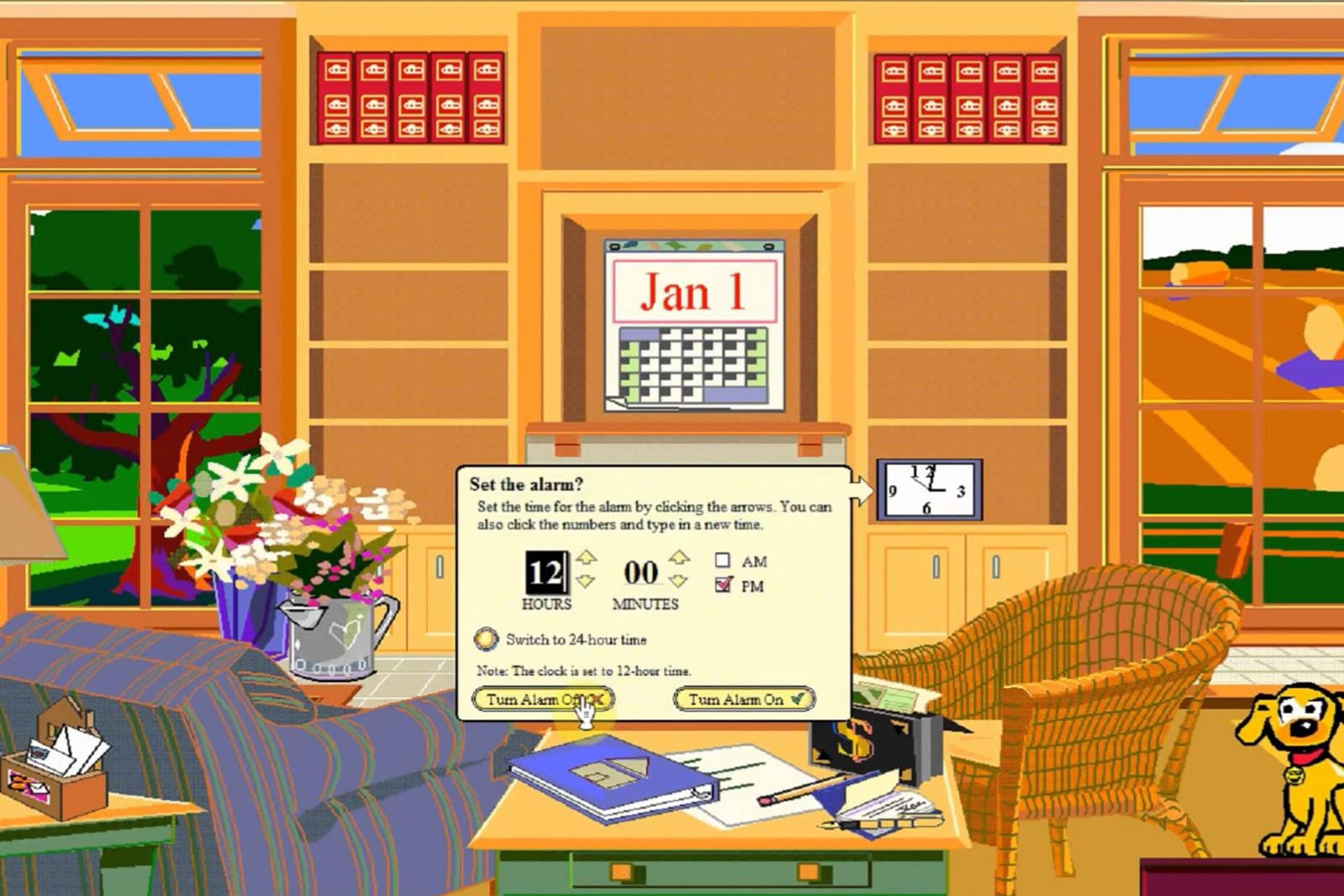
MSN Messenger (1999 to 2014)
At the end of the 20th century, with the advent of the Internet, companies were looking for a way to dedicate themselves to this space, and instant messaging services (IM for short) were the best option for sending and receiving information at the highest possible speed. At first, AOL became one of the most widely used online communication services, and ICQ service was considered one of the important options for users.
As a software company, Microsoft had just launched Windows 98, and its millions of sales had poured huge income into the company’s coffers. Despite the huge financial resources, developing a new messenger was not a difficult task; Therefore, in 1999, the first version of MSN Messenger was introduced. At first, the Redmonds had a tough time competing with other entrants in the instant messaging world. But in the future and with its numerous software updates, it was able to attract the opinion of 75 million people until 2002.
MSN Messenger reached one peak after another and in 2009 it reached 300 million monthly active users after adding many attractive features such as online two-player game, full-screen animated stickers and many more.

But what caused the downfall of MSN Messenger? It may be hard to believe, but the reason for this happened was Microsoft itself! The Redmond giant bought Skype in 2011 for $8.5 billion (about $11 billion in today’s value) and in 2013 announced plans to combine the two messengers. As a result of this decision, on October 31, 2014, the MSN Messenger servers were shut down for good, ending a decade of success forever.
Of course, don’t think that shutting down the MSN Messenger servers caused Skype’s success; To find out the result of this incident, read the Skype section.
MSN Direct Smart Watch (2004)
Redmondi’s MSN Direct service was one of the creative services based on radio waves that provided instant news to users in a fraction of a second. In fact, Microsoft had rented the 67.65 kHz band to inform its monthly service users on different platforms.
But as you can probably guess, Microsoft was not satisfied with this stage and had more ambitious thoughts in mind. This company unveiled its smart watches at CES 2003; Of course, these smart watches were produced in collaboration with famous companies such as Fossil and Citizen, but they used the SPOT platform of the giant Redmondi. The SPOT platform was the main platform of the MSN Direct service and formed the main foundation of the thinking behind it and was being developed by Microsoft’s research department since the late 90s.
Despite the limitations of wireless communication at that time, Microsoft intended to make as many different devices as possible intelligent using the SPOT platform; The working method was the same as mentioned at the beginning of the work and this company managed to transmit information such as traffic status, weather and even messages through radio frequencies. Following this work, a wide range of devices such as smart watches, coffee makers and many others became smart by being equipped with the SPOT platform and its required hardware.

Let’s go back to the smart watch projects. Devices that we thought failed because they were “ahead of their time”. Of course, there were limitations such as the one-way radio communication, but this was not a problem that alone would cause the failure of such an efficient and innovative product.
Microsoft’s smartwatch was ahead of its time
On the other hand, MSN Direct smart watches were equipped with great features such as a wireless charger! In fact, Microsoft’s first smartwatches were among the first devices to operationally use wireless charging. In addition, being equipped with a large screen with attractive animations was one of the other features of the MSN Direct smart watch.
The reason for the failure of smartwatches equipped with MSN Direct can be found in the relatively high cost of its monthly service (yes, Microsoft developed a monthly subscription service in the early 2000s). The price of MSN Direct service was 60 dollars per year and at that time it was considered a premium figure for a subscription service. Of course, keep in mind that at that time there was no news of 2G and any advanced wireless communication, and the SPOT platform was considered a great innovation and deserved such a cost.
Microsoft Kin (year 2010 to 2011)
In an effort to attract the attention of the 15 to 30-year-old age group and encourage them to move towards the Microsoft ecosystem, they started a $1 billion project in cooperation with Sharp. After 2 years of research and development, Kin ONE and Kin TWO smartphones were finally introduced in 2010; Devices with touch screen and slide Q-WERTY keyboard.
Kin smartphones used the KIN OS operating system, which was based on Windows CE, and was prepared for sale exclusively through the Verizon operator; But only two months after the launch, Verizon suddenly stopped selling it, and as a result, all Redmondi’s plans to release the Kin series in Europe were also suspended. Finally, Microsoft transferred all Kin team employees to other departments and the project was completely canceled.
Of course, a little later, due to the abundance of stock in Microsoft’s warehouses, the company decided to remove the Kin smart features from the devices and market them under the names ONEm and TWOm and as feature phones, whose features are limited to making calls and sending SMS. Been.
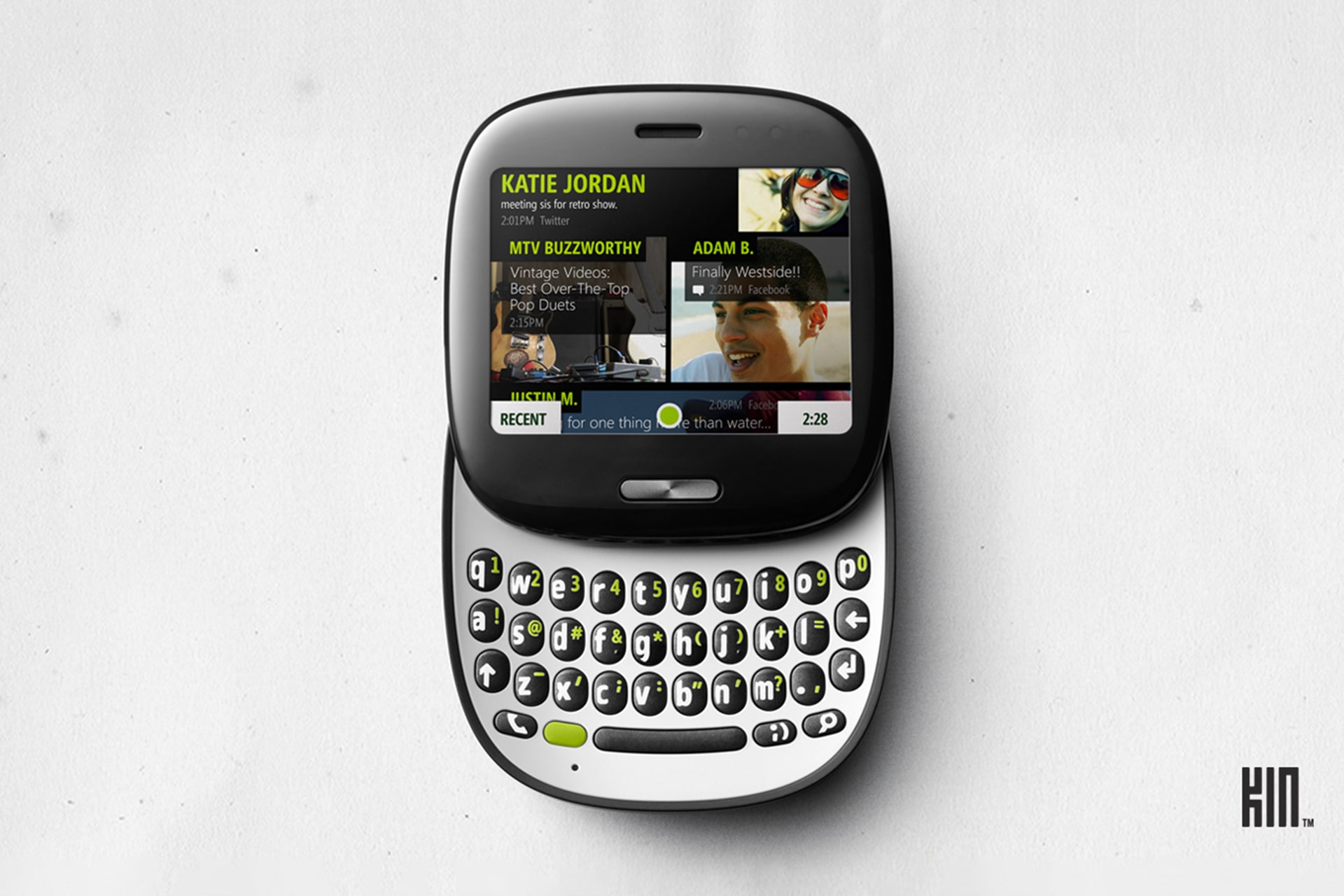
But what was the reason for the sudden cancellation of the project? According to information published by Verizon, sales of the Kin series were so low that they decided to stop selling it altogether in a short period of time.
On the other hand, the inability to install instant messaging, limited software for Kin OS, the absence of a software store, and the inability to transfer contacts from another phone for users are among the other reasons for the cancellation of the project and its failure. On the other hand, the keyboard of the device also made typing difficult for users due to the lack of automatic correction feature.
Kin series smartphones used unique features that are worth mentioning. For example, we can refer to unlimited cloud space. The aforementioned cloud space allowed users of Kin devices to automatically synchronize their information, including photos, videos, and messages, in the cloud space.
In addition, users of Kin phones could have access to Microsoft’s huge music archive by paying $14.99 per month and purchasing Zune Pass.
Zune Player (2006 to 2011)
In the early years of the 21st century, Apple’s iPods were hitting the world markets one after the other, and Microsoft did not want to miss out on such a potential to make more profit. For this reason, the world’s software giant thought of developing its own dedicated music player and decided to launch a product that could outcompete Apple’s iPods.
The fruit of this Microsoft thought was the Zune player, which had an iPod-like appearance and the interface between the software and the user was limited to physical buttons. The Redmonds envisioned a very bright future for the Zune; For this reason, they launched different models of it. The Zune music player was also among the stars in the movie Another Cinderella Story starring Selena Gomez, but the situation did not go well like the other products in this article.
Microsoft introduced various limited edition models of the Zune, which also found their own fans. But still, customers thought it was more logical to buy an iPod. Finally, after releasing 7 models of the Zune, Microsoft halted its development due to lower than expected sales and declining sales.
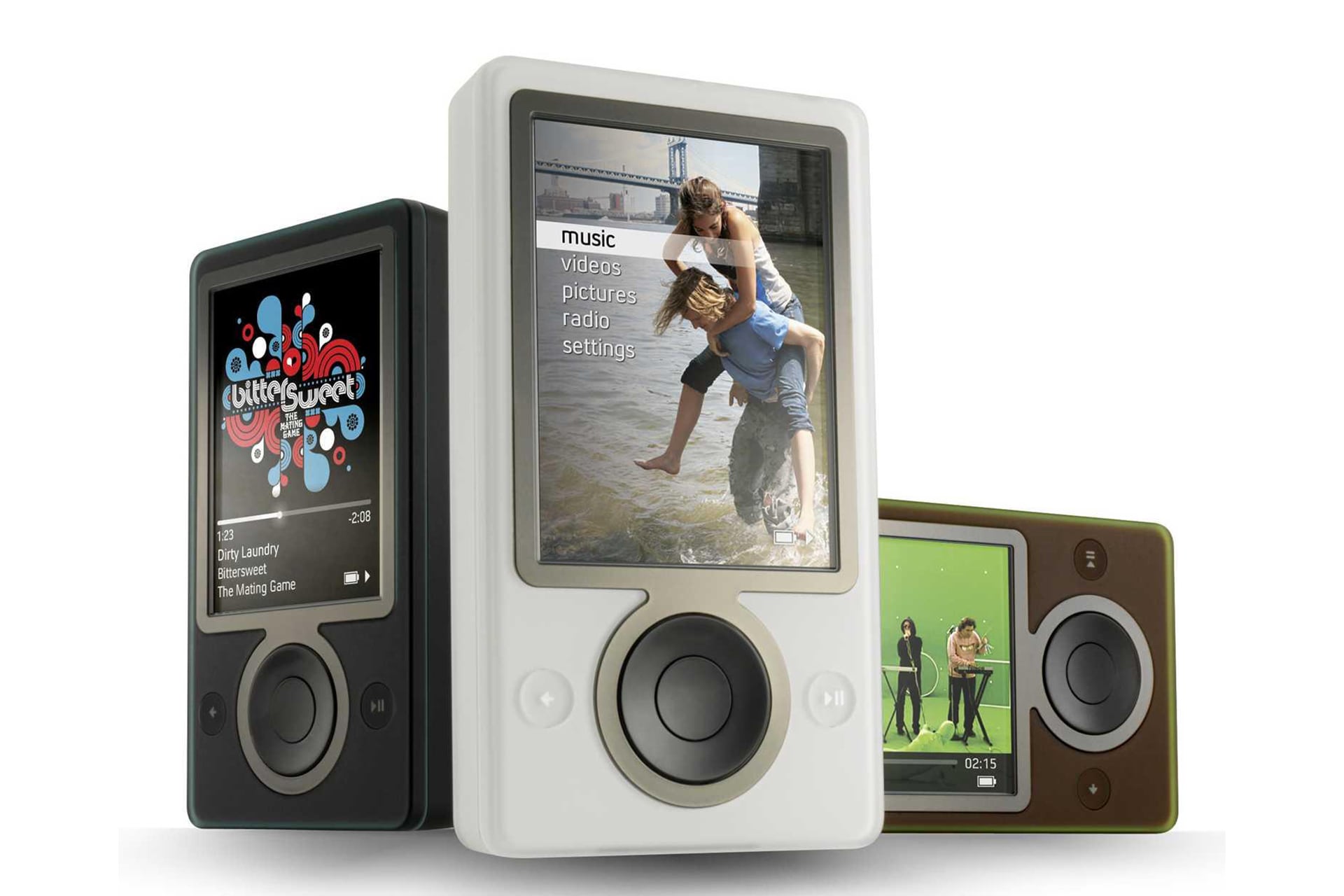
The Drummonds had a music streaming service before Spotify
A variety of factors contributed to the decline in Zune sales. Factors such as irregular software updates from Microsoft and numerous bugs in the operating system of the device. In addition, Zune 30 owners encountered a strange bug on the last day of December 2008 that caused the phone to completely freeze. Microsoft stated that the reason for this happened was a problem in the clock driver, which caused the driver to enter an infinite loop on the last day of the year to calculate the year, and eventually all the system operators stopped working. The Redmonds suggested that users leave their Zune idle for 24 hours so that the problem would resolve itself after the first day of 2009.
One of the best-selling Zune models can be introduced as the Zune HD, which according to reports sold out quickly, and on Amazon, the delivery time for the 16GB model was 1-2 months and the 32GB model was 1-3 weeks. Zune HD uses a 3.3-inch touch AMOLED screen and is considered one of the most beautiful models in the series.
Windows Phone (2010 to 2017)
It is not possible to publish an article about Microsoft’s failures and not see traces of Windows Phone (or Windows Mobile) in it. Windows Phone was considered a more complete and more modern version of Windows Mobile, which used the design elements of the Zune operating system.
Windows Phone launched with Windows Phone 7 in 2010 at the Mobile World Congress. A year later, Windows Phone 7.5 Mango was introduced, which brought changes such as Internet Explorer 9, Twitter integration with People Hub, third-party app support for multitasking, and SkyDrive access.
Microsoft’s procrastination, the main reason for the death of Windows Mobile
Then a version called Tango was also introduced, which made it possible to run Windows Phone on devices with an 800 MHz processor and 256 MB of RAM. The latest version of Microsoft’s mobile operating system called Windows Phone 7.8 was released in 2013 so that its users could be left alone. In this regard, Microsoft cited hardware limitations as the reason for not updating devices based on Windows Phone 7 to Windows Phone 8.
After the release of Windows Phone 8, Microsoft was still facing problems in building a powerful operating system for the mobile world, and the lack of many competitors’ facilities, such as the notification center, was strongly felt in the Redmondi platform. Following this, the Redmond giant decided to introduce Windows Phone 8.1 in 2014 with extensive changes.

Windows Phone 8.1 was equipped with Cortana, a smart voice assistant, and it brought features such as Notification Center, third column of tiles, system sound management in separate sliders, new personalization features and many others. In addition, Microsoft introduced the possibility of using software navigation buttons for manufacturers to remove the limitation of using physical buttons.
But most importantly, it was the use of the Windows NT kernel instead of Windows CE that set Windows Phone up for higher goals and new opportunities to keep pace with the Windows desktop. In fact, with Windows Phone 8.1, Microsoft took one of its biggest steps to build a complete operating system for smartphones.
Following the release of this version, the sale of devices based on Windows Phone 8.1, especially Nokia’s Lumia series, increased significantly; To the extent that in some European markets, Microsoft managed to seize the position of iOS as the second mobile platform.
Windows Phone users were impatiently waiting for the next version of the operating system, and Microsoft, in addition to launching the Insider program for Windows 10 in order to receive updates earlier, also provided this feature for Windows 10 Mobile so that users can get it before the general release of the operating system. to try
But as the time of general release approached, Microsoft left Windows Phone 8.1 users alone, similar to what it did with Windows Phone 7 users, and Windows 10 Mobile due to “hardware limitations” and “insufficient hardware resources to run Soft and smooth operating system” only for limited models. This is while all the models were able to run the Insider version of Windows 10 Mobile without any problems.
Windows 10 Mobile was well integrated with Windows 10 desktop and, according to the company, used the same core. Phones equipped with Windows 10 Mobile could run UWP applications developed for the desktop without problems. Therefore, in a short period of time, many programs were also available for mobile devices; However, the number of mobile apps in the Windows 10 Mobile software store was still very limited.
In addition, Google’s refusal to offer its services for Windows 10 Mobile increased the severity of this issue, until finally in 2017, Microsoft officially announced the stop of the development of Windows 10 Mobile to fail for the third time in the field of developing an operating system for smartphones.
Purchase of Nokia mobile business (2013 to 2017)
Long-time Nokia fans will definitely consider this episode one of the darkest parts of Nokia’s career. Just when the company had reached a new level of smart phones with the development of the MeeGo operating system, Stephen Elop, who is also known as Microsoft’s Trojan horse, as soon as he reached the position of CEO of Nokia, signed a contract with In 2011, Microsoft retired Symbian and Migo and switched to Windows Phone. Right after the announcement of this news, one of the Google officials announced in a tweet:
Combining two turkeys does not make an eagle.
After this incident, many analysts commented on Ilap’s performance and announced that this person is preparing Nokia to be bought by Nokia; A charge that Ilap denied many times. But finally in 2013, Nokia agreed to sell its smartphone business to Microsoft for $7.2 billion, and the final deal was finalized after most regulatory approvals around the world in the first quarter of 2014.

According to the previous events, many were of the opinion that by buying a large company, the probability of success will not be guaranteed; Because the managers of the company must explain a principled and coherent plan to use all the potentials of that company. An event that was probably overlooked by Microsoft. Because only after 3 years of buying Nokia, in 2017, the Redmond giant announced the sale of its smartphone business to a Finnish company called HMD Global, which was founded by former Nokia executives. Of course, in this contract, Microsoft’s Vietnam factories were also handed over to Foxconn, the largest smartphone manufacturer in the world, which was one of the investors in HDM Global.
The purchase of Nokia by Microsoft dealt a heavy blow to this company and recorded this purchase as one of Redmondi’s biggest failures forever.
Microsoft Band (2014 to 2016)
After experiencing the failure of smart watches based on the SPOT platform, in 2014, Microsoft went to develop a new idea: a health bracelet! Microsoft chose the name Band for its new product and unveiled it 4 months earlier than Apple Watch on November 8, 1393 (October 30, 2014). The Microsoft Band consisted of 11 sensors and a curved AMOLED display with a size of 32 x 12.8 mm and had the ability to connect to Windows, Windows 10 Mobile, Android and iOS. Of course, the first generation Band did not have an AMOLED display and iOS support, and these features were added to the device in the second generation.
At first, users thought that Microsoft Band uses the core of Windows 10 to manage tasks; But Microsoft officially announced that the band does not have an operating system and only a special firmware has been developed by Microsoft to manage the hardware.
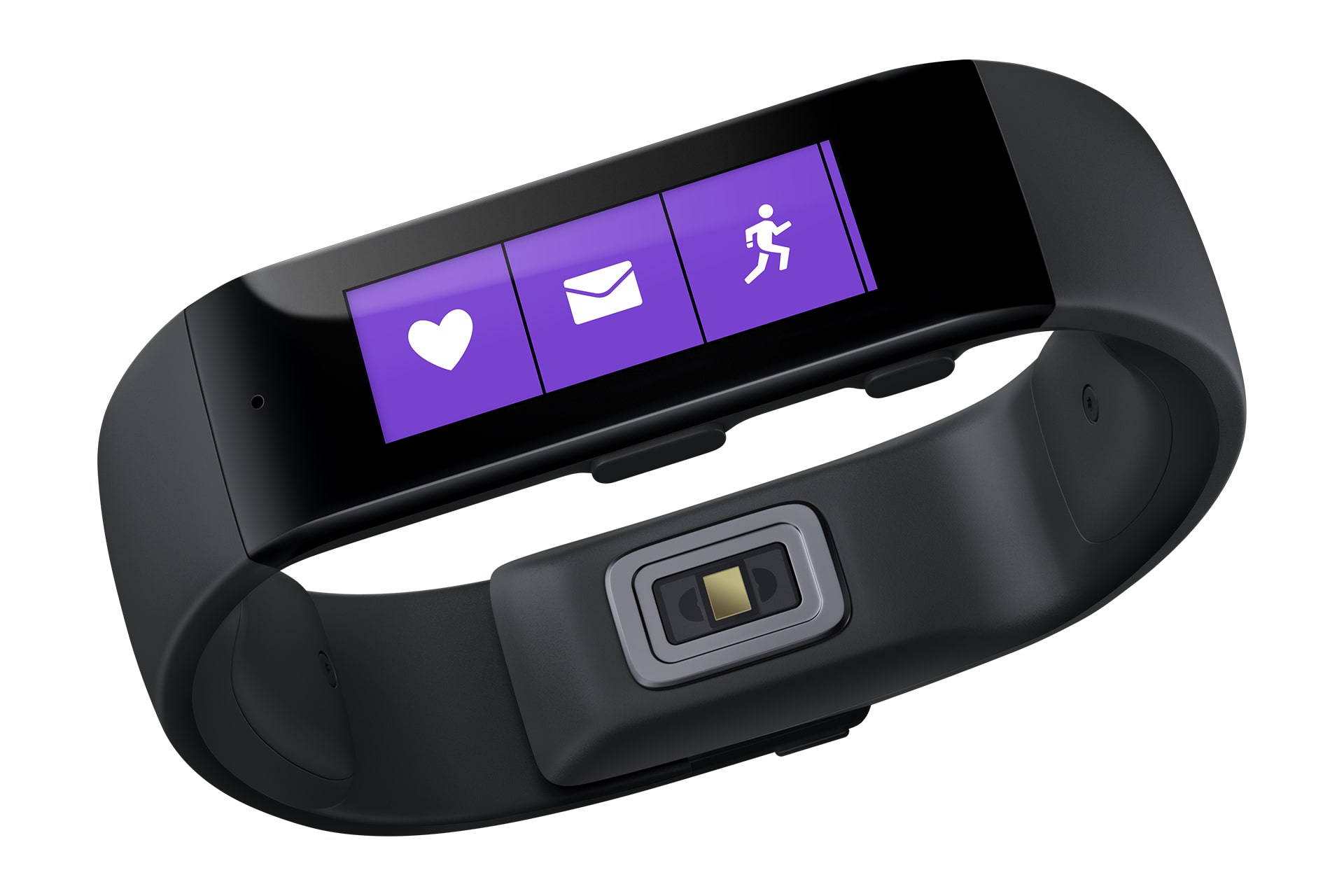
Extremely powerful, with poor support
Microsoft’s health bracelet was a full-fledged product that fascinated every user with its unique features. But its not very interesting ergonomics caused the locking part of the strap to get stuck in different places, and also the tearing of the strap of the second generation due to its low resistance, caused very few of it to be sold. In addition to this, the smart watches produced by Apple, known as Apple Watch, were much more attractive to users than Microsoft’s health band, and on the other side of the field, Samsung, Huawei and other companies active in the field of smart watches and health bands by offering attractive products. They pushed the representative of the Redmonds to the sidelines.
Finally, in October 2016, the end of the Band series was announced, and in 2019, its application stopped working forever. Microsoft also considered a program for users who continuously used the first or second generation Band, during which users were paid $80 and $175, respectively, as compensation.
Groove Music (2014)
Groove Music has a long history. After failing to compete with the iPod, Microsoft tried its luck again with the Groove music application when Windows 10 was released. This UWP application was able to run on a wide range of Windows devices, from desktop computers to mobile, Xbox, and HoloLens, and it also included Microsoft’s music subscription service.
The Zune failed again
By the end of 2014, Groove Music hosted more than 50 million music tracks, including albums and singles from world-renowned singers, as well as major music publishers. Microsoft even released the Groove service for Android and iOS to expand its territory; But with the end of support for Windows 10 Mobile and the low reception of this music service, finally in December 2017, the Redmonds announced the death of Groove. They also removed Groove’s Android and iOS apps from the app stores a year later, in December 2018, to put the final nail in its coffin.
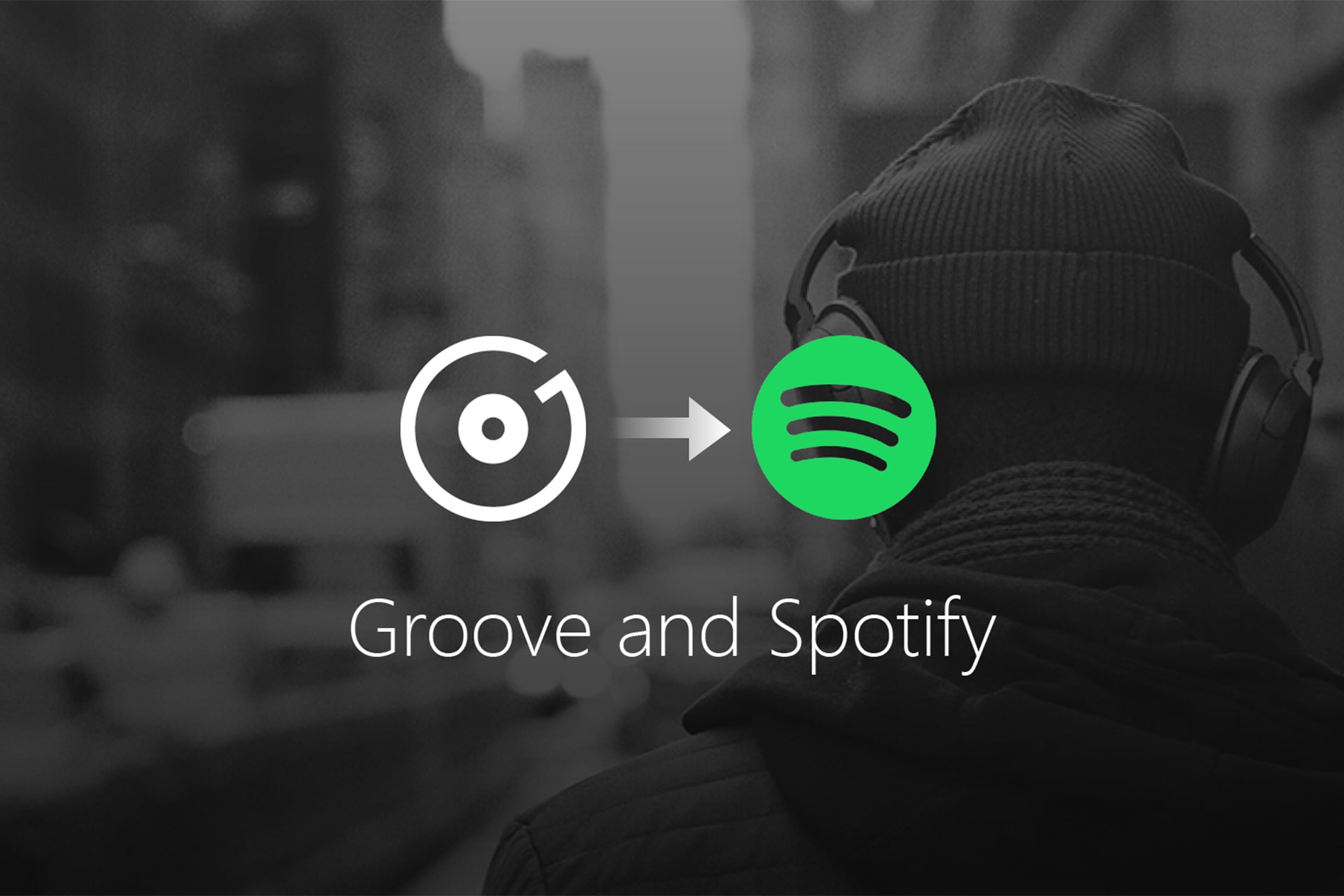
The Groove application, which had lost its original nature, i.e. access to millions of music tracks, was renamed to the Media Player application after the release of Windows 11, and continues to exist under a new name and, of course, an improved and modern user interface. .
Windows RT/Surface RT (2011)
Windows RT and Surface RT are another failure in Microsoft’s efforts to make a version of Windows for portable devices. In fact, the main reason for Redmondi’s failure to enter this space and continuous failures can be seen in the lack of a coherent plan. While this company had an operating system called Windows Phone for smartphones and even though the Surface Pro series was considered a full-fledged computer in the form factor of a tablet, in 2011 it developed and introduced its own ARM operating system called Windows RT.
This version was actually the same as Windows 8, but it was possible to run on ARM chips. It seems that Microsoft, seeing the success of the iPad, tried to produce a similar product with the power of Windows; Of course, the limited version of Windows.
You might say to yourself that several years before Apple, Microsoft introduced the ARM operating system? That’s exactly how it is; But Microsoft’s operating system was so weak that despite the lack of a powerful software ecosystem, Windows RT was still introduced and placed on Surface RT tablets; An operating system that didn’t have software and didn’t support current Windows programs (X86 programs) and didn’t even provide the ability to install programs outside of the Windows software store.
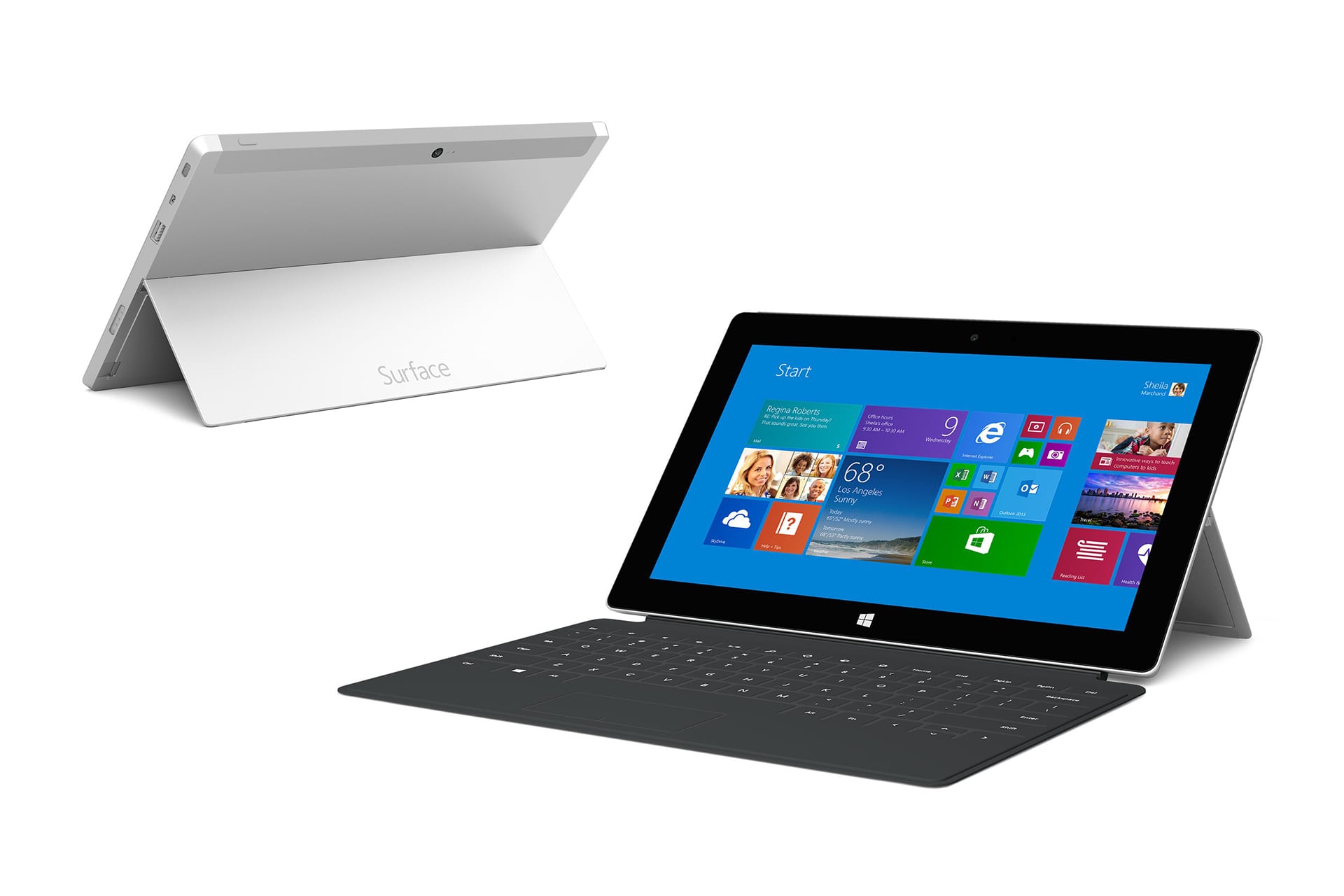
In fact, your relatively expensive Surface RT could only be used for purposes such as web browsing and watching movies, and not for any professional or semi-professional work. The ARM Windows Store was like a desert with a handful of high-quality games; What about practical applications. On the other hand, the new user interface of Windows 8 called Metro UI was so strange and unfamiliar to users that few people were interested in using it. In fact, the cause of failure of Windows 8 was its complex user interface.
A platform without original applications is doomed to failure
The only strong point of Surface RT tablets (or Windows 8 and Windows RT operating system in general) can be considered its wonderful gestures for tablets. So that many of these motion gestures were used by Apple in various ways in iPad and iOS operating system.
Finally, after the end of Surface 2 and Lumia 2520 tablet production, Microsoft quietly ended support for Windows RT. Surface RT also suffered a similar fate, and finally, by using Intel’s chip in Surface 3, Microsoft linked the fate of making a successful tablet based on ARM chip with failure once again.
Cortana (2015)
The release of the Siri application in the App Store and the demonstration of the high potential of artificial intelligence caused Apple to quickly purchase the company that developed Siri and after removing its application from the App Store, introduced it as a new feature along with the iPhone 4S. After the introduction of Siri, the fever of making an intelligent voice assistant in the big companies of the technology world, including Google and Microsoft, gained strength.
Redmonds, ahead of Google, first unveiled the Cortana smart voice assistant in 2014 during the Build 2014 event, and then in 2015, this voice assistant was officially released for Windows 10 and Windows Phone-based smartphones. A year later, in 2015, Cortana was released for Android and iOS to expand its activities to other mobile platforms. Cortana even appeared in the Invoke smart speaker and Surface headphones.
Cortana was powerful; it was enough to say:
Hey Cortana, Play Eminem and Cortana will check the music stored on your device through Groove Music and, if there is any music by Eminem, play it. The ability to play music offline through the fully online voice assistant was very exciting. For example, Siri used to do the same only with music apps and online sharing services like Apple Music.
On the other hand, the Google Now field was not very smart, and most of the time, it looked like a retarded creature in front of Cortana and Siri, and did not understand the complex commands very much. Therefore, it was not considered a competitor for the voice assistant of the Redmonds and Cupertinos. Another advantage of Cortana was compared to Siri, which entered only through voice; But Master Chief’s Cortana provided the user with the ability to enter commands in text form if there is a problem or limitation in speaking.
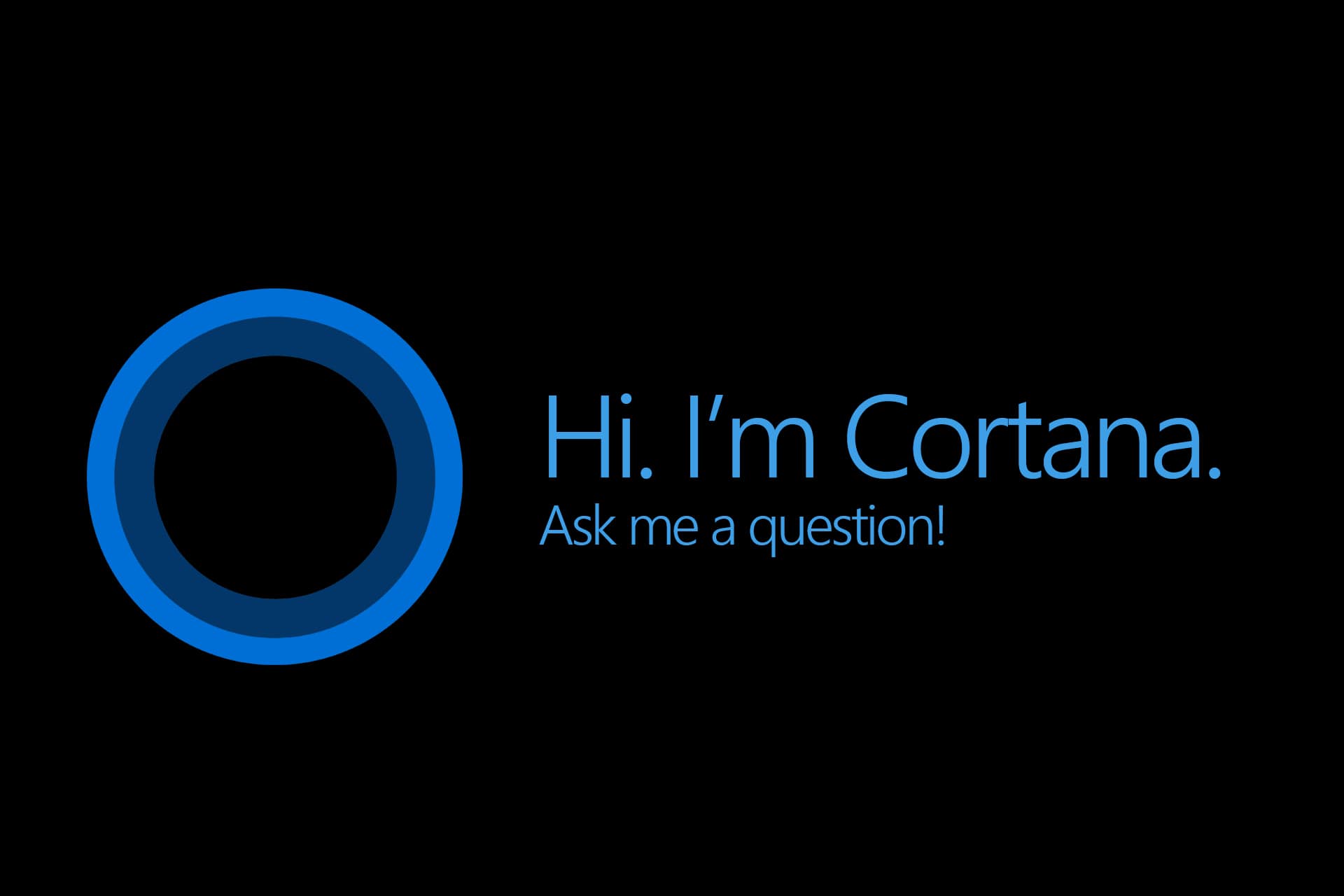
But… the usual but that can be seen everywhere in this list. Although Cortana was very smart and in some areas it worked better than Siri and even Google’s voice assistant, the Redmonds started the process of limiting Cortana after the death of Windows 10 Mobile. Just as Apple was developing Siri and adding it to its various platforms one after another, Microsoft was removing features from its beloved voice assistant.
Finally, after various rumors about the death of Cortana, Microsoft CEO Satya Nadella announced that the company plans to make Cortana ready for organizations and Office. Even the Cortana button was removed from Windows 11; But it can still be called by Win+C combination button. Of course, as mentioned, many of the previous commands are no longer available, and Cortana has become an assistant similar to the previous Google Now, which does not seem very intelligent.
Although Cortana is still around, it hasn’t received a major update from Redmond for a long time; Therefore, we consider Microsoft’s failure to push users to use Cortana another failure for this American company.
Surface Earbuds (year 2019)
Redmondi’s all-wireless headphones are so anonymous that we bet many of you, dear readers, don’t even know such a device exists! Microsoft’s Surface Earbuds were introduced in 2019 and quickly forgotten. The biggest reason for this can be considered its unusual and tray-shaped design, which, despite being placed in the ear, had a not very attractive appearance. The tray-shaped part was placed for motion gestures and it was possible to control PowerPoint slides through this part.

Surface AirPods were a powerful product; But most of its features were considered meaningless to the users. Of course, it is still possible to buy Surface AirPods through the Microsoft store; But buying a product that even Redmondi has not released a special update for nearly 4 years, and there is no news of its next generation, does not seem rational.
It seems that the first generation of Surface Earbuds is the last generation, and we will no longer see a product in this category from Microsoft.
Surface Hub 2X (2018)
One of Microsoft’s enterprise products is called Surface Hub. A large screen that has wide applications for intra-organizational conferences. Surface Hub is a large smart whiteboard that has the ability to communicate in real time with other branches of the company, and also people can work on a project at the same time.
Following the reception of Surface Hub, Microsoft introduced its second generation, including two versions named Surface Hub 2S and Surface Hub 2X in 2018. One of the main features of X version was the ability to rotate the screen smoothly without changing the way its content is placed. For explanation, it is better to take a look at the following animation:
Initially, the S version was supposed to be released in 2019 and the X version in 2020. Microsoft even started the pre-sale of the two models. At that time, Microsoft was secretly developing a project called Windows Core OS, through which Windows would become a single core in all devices, including Windows, Windows Mobile, Xbox, Hub, and HoloLens, and its only shell based on The display of the device changed automatically. This issue caused this unannounced version of Windows to take the nickname Shapeshifter.
One of the features of Windows Core OS for Hub devices was the ability to rotate the screen without changing the angle of the content, which after the project was stopped, Microsoft had trouble providing this feature in the Surface Hub 2X. After a few years and much speculation, Redmond announced in a webinar with Surface Hub 2X buyers that they will do their best to deliver this feature. They also promised a big update for the Surface Hub 2S, which will likely add an advanced screen rotation feature. But such an event did not happen and in the end, in the silence of the news, Surface Hub 2X was forgotten.
Hololens (2016)
It is no secret that the Microsoft HoloLens device is considered a revolutionary product. I remember during the introduction of HoloLens 2 and after holding a hologram and changing its size, I was completely surprised and did not recognize it. A great achievement by Microsoft, which was actually a long-standing dream for humans.
Halolens had a wide range of features. For example, users could appear as a hologram in another part of the world, look at the environment through the lens of the second person’s halolens and investigate problems. This device even allowed a team in different parts of the world to work simultaneously on the development of a hologram design.
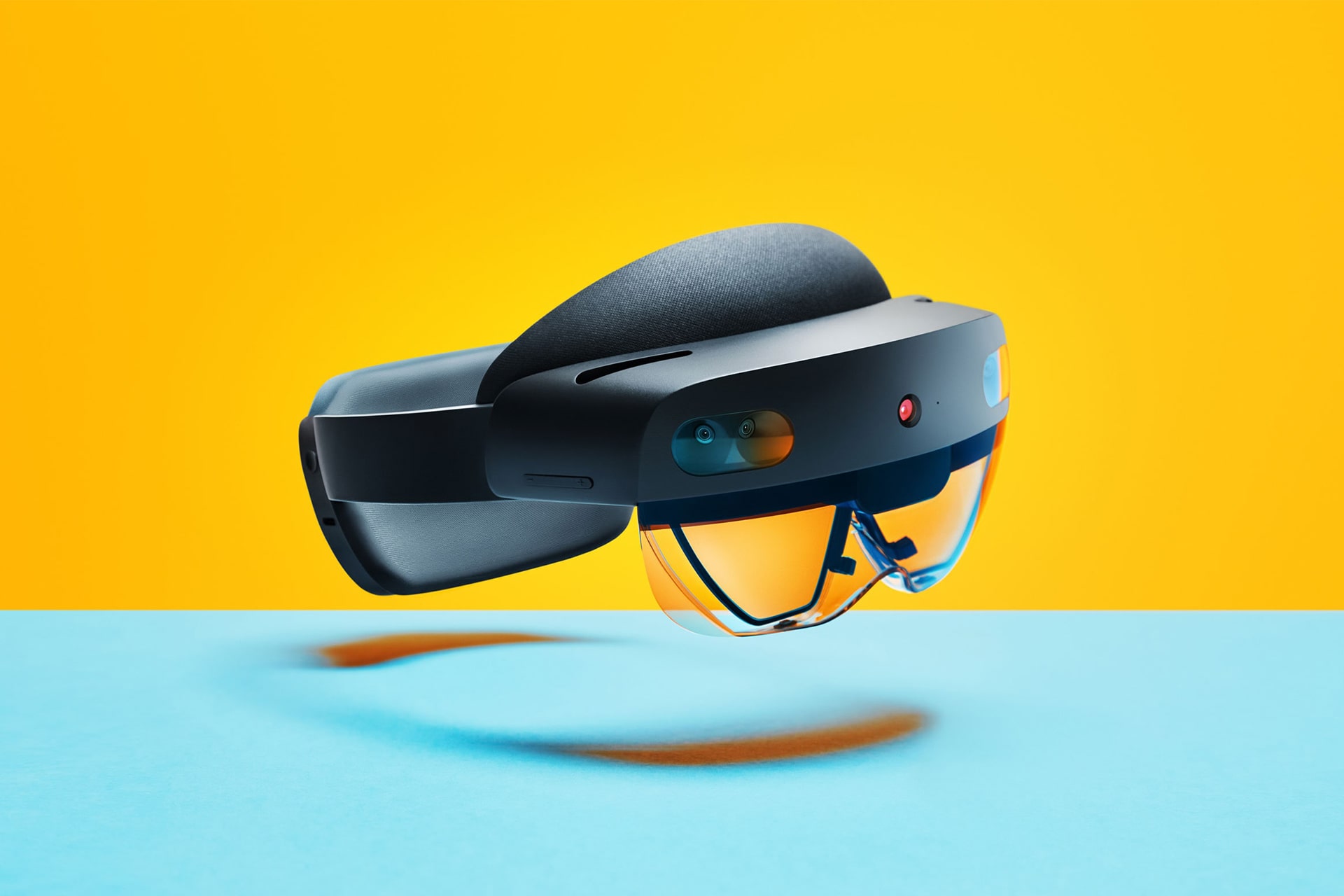
After the introduction of Halolens 2 and the uncertain fate of Windows Core OS, the future of the Halolens project was also in an unknown state. Currently, it has been 4 years since the introduction of HoloLens 2, and with the resignation of Alex Kipman from the position of the head of Microsoft’s artificial intelligence and augmented reality, the future of this project was more and more tied to failure and complete cancellation. Currently, there is no news about the third generation of HoloLens, and due to the extensive changes in Microsoft’s policies, it seems that this project will gradually be added to the list of Redmond’s big failures.
Surface Pro X (year 2019)
The Surface Pro X isn’t exactly a failure; But due to the very low sales and extremely poor performance of the SQ1 and SQ2 chips in both generations of this tablet, the success of the X series is almost impossible! Unless, in the next one or two years, Microsoft, in collaboration with Qualcomm, or by relying on its technical knowledge in terms of chip production, will reach a stage where its chips will offer the same power as Apple’s M series chips.
Even Dermondi displays the following text on the product introduction page of Surface Pro X:
If you plan to play graphic-oriented games with your Surface, Surface Pro 8 will be a better option for you.
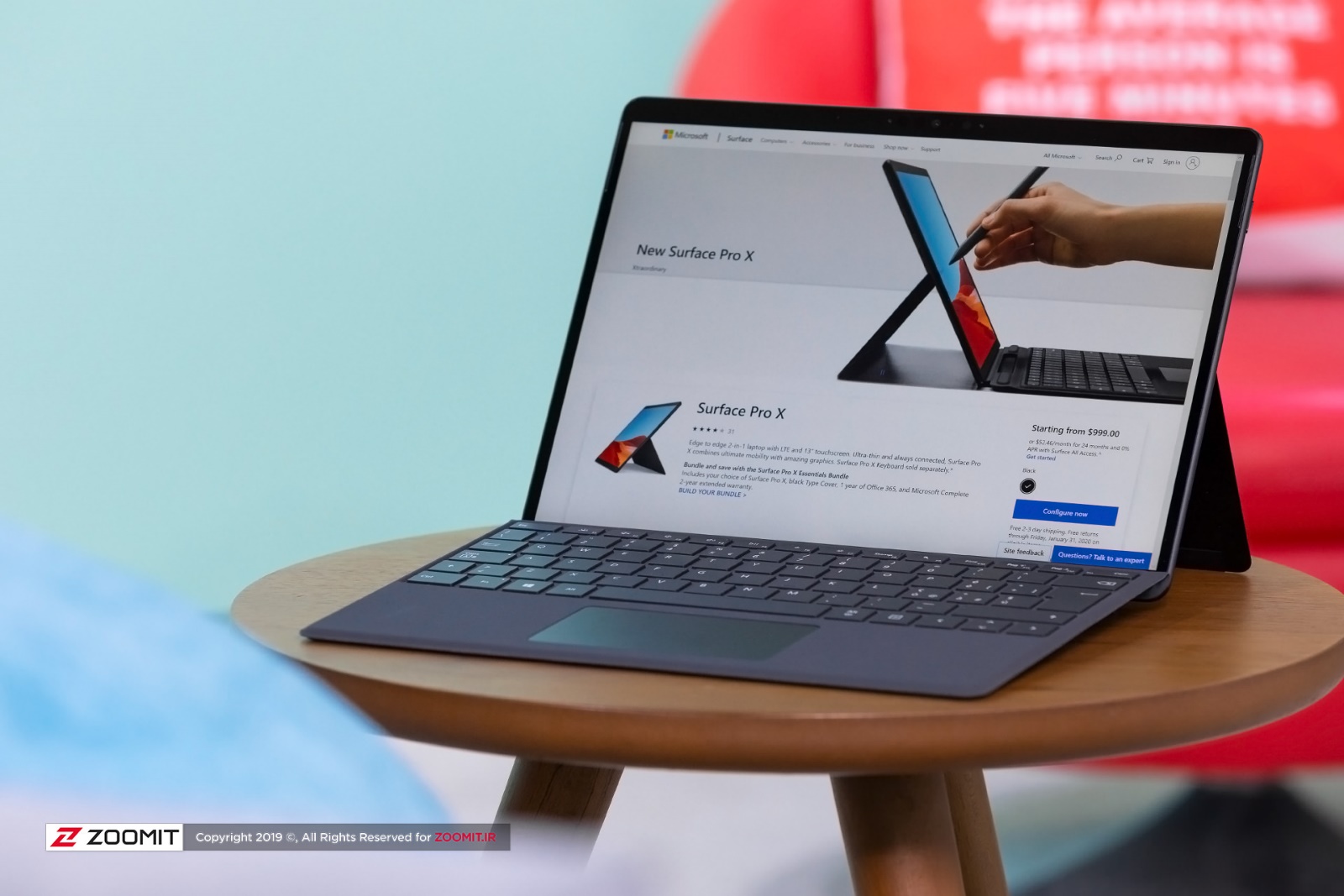
Even after the public release of the device and conducting further investigations, it became clear that the SQ2 processor is actually the same as the SQ1 with minor changes, and its hardware power is not much different from the previous generation. With these interpretations, even Microsoft itself has no hope for the success of Surface Pro X.
In such a situation, the Windows Arm project and Surface Pro X will definitely suffer the fate of Windows RT and Surface RT; Unless the Redmonds put an extraordinary trump card on the table, which seems unlikely.
Windows 10X (year 2019 to 2021)
Windows 10X was one of those strange and unplanned Microsoft projects that was eventually canceled. After stopping the Windows Core OS project, Microsoft, which was looking for a device with two separate screens, thought of developing an operating system with a dedicated user interface for such a form factor. The device equipped with two Microsoft screens was called Surface Neo, which was introduced in a special event along with Surface Duo. Behind the scenes of Surface Duo, there is also a strange incident that we will discuss further in this section.
Microsoft was developing Windows 10X for the Surface Neo, whose user interface was optimized for devices with two screens. The company even released preview versions of Windows 10X for developers to integrate their apps with. The development process of Windows 10X was slow and finally Redmondi announced that they will release all the features of this version of Windows in the form of a new free update called Windows 11!
Microsoft’s unplanned decision was a shock to the people of the technology world; Because this company announced at the time of introducing Windows 10 that this version will be the last version of Windows and Windows will receive various updates annually as a service from now on.
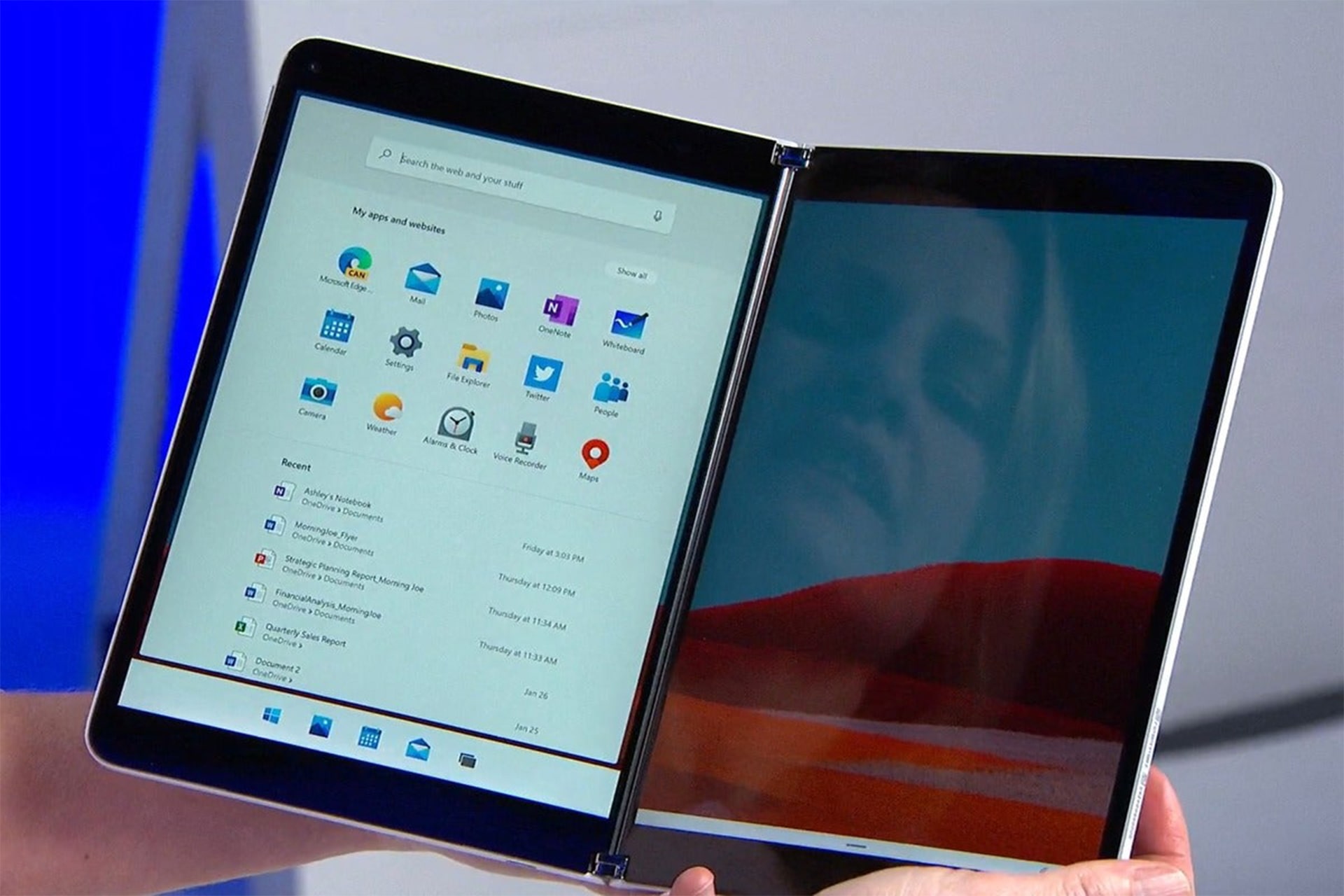
In addition, according to rumors, Surface Duo was also supposed to be powered by Windows 10X, which was known as Andromeda OS in Microsoft’s internal correspondence; Surface Duo, which was the legendary Surface Phone, was supposed to be Microsoft’s Windows smartphone, but at the last moment, due to the fact that Andromeda OS was not ready and without the knowledge of the Surface Duo development team, its operating system was replaced with Android. In fact, the Android skin on the Surface Duo includes most of the features of Windows 10X. For more information about Andromeda OS, we recommend reading the Windows Central article .
The future depends on a device with two screens; But we will cancel it
After the cancellation of Windows 10X, the people of Redmond no longer had an operating system with support for devices equipped with two screens, and for this reason they canceled the development of the Surface Neo in complete silence. Of course, it is said that the thin body of the Surface Duo and the lack of a powerful processor to power such an advanced device are other reasons for the cancellation of the Surface Neo project.
Although according to Microsoft, the future of smart devices depends on smartphones and tablets with two screens, but the company still does not have a complete and clear plan for the development of the operating system for these devices, and the canceled Windows 10X project is also a proof of Redmondi’s failure to provide a product in The form factor is mentioned.
Finally, we have to mention something more strange. Despite the cancellation of the Windows 10X project, its Emulator Image can still be downloaded through Microsoft‘s software store!
Kinect (2010 to 2017)
The first decade of the 21st century was full of new and ambitious ideas to change the game world. Among a wide range of ideas, Nintendo’s Wii device was able to attract the opinion of many users with its movement handles. Considering that Microsoft had just entered the game world and not even a decade had passed yet, 5 years after the second generation of its gaming consoles and in the seventh generation of game consoles, Microsoft introduced a unique device called Kinect. The Kinect allowed gamers to play Kinect-supported games (such as Kinect Sports) without the need for a controller.
Kinect did not work without problems and there were small and large bugs in it, but due to the technology of the device and its reliance on the camera and infrared (IR) transmitters, all these things could be ignored. Kinect experienced unprecedented sales and achieved 9 million sales in just 60 days. The games produced for Kinect were generally normal games and not very graphic. Many gamers played games with their families. In fact, the nature of the Kinect was to play the game in groups, and it pushed the gamer to find a physical opponent to challenge it.
After the success of Kinect, Microsoft released its advanced gaming camera for Windows and made its software development kit (API) available to developers. After this incident, Kinect was used in a wide range of different projects including military, medical, robotics, etc. and became a key member.
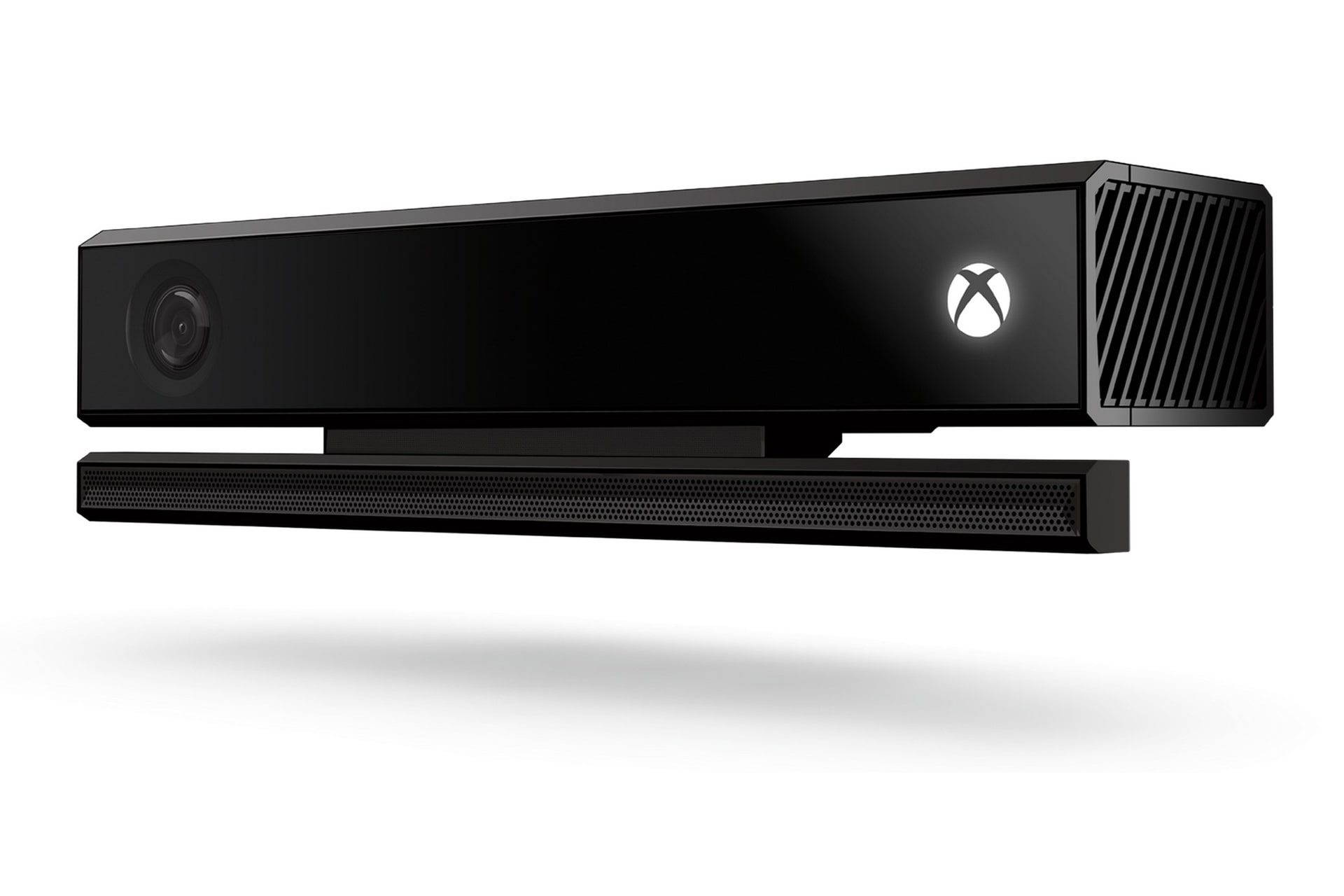
Kinect’s success continued for 3 years in a row until in 2013, the Xbox One console came with the second generation of Kinect by default, making the 8th generation bundle of Redmonds $100 more expensive than the Japanese competitor. Following this decision, the sales of Xbox One decreased for reasons that we will discuss in the rest of the article, and as a result, fewer game companies were interested in developing games for the second generation of Kinect. Finally, in 2017, the production of Kinect was stopped and Microsoft turned a great success into a great failure due to its ambitions.
Of course, we must point out that Kinect’s failure was not only due to low sales of the second generation; Rather, the low reception from customers and very limited users made developing a game exclusively for Kinect not very economically justified for game studios. In addition, it was not possible to perform popular styles such as shooter and racing.
Finally, it is worth mentioning that Microsoft continues the Kinect experience in a new hardware called Azure Kinect, which is actually a device for large organizations and companies.
Edge UWP (2014 to 2019)
Microsoft was once the leader of the browser world with Internet Explorer; So that this company’s market share of browsers was more than 95%! But with the appearance of Firefox in 2004 and its 60 million downloads in just 9 months, an alarm sounded for Redmonds. In 2011, Internet Explorer’s market share reached less than 50%, and a year later, in 2012, Google Chrome ended Microsoft’s 14-year reign over the world of browsers.
Microsoft made many efforts to provide a modern browser with attractive features, one of which was the Edge browser based on the UWP or Universal Windows Platform. Redmondi’s new browser, the first public version of which was released in July 2015, was able to run on all products that used the Windows core due to the use of the UWP platform. For example, we can mention Xbox, Windows Mobile, Surface Hub, and HoloLens.
But the bad performance of the UWP platform and numerous crashes made Edge UWP not get much attention from the beginning. Even though Redmond released the new browser by default with Windows 10, its share never exceeded 5%.
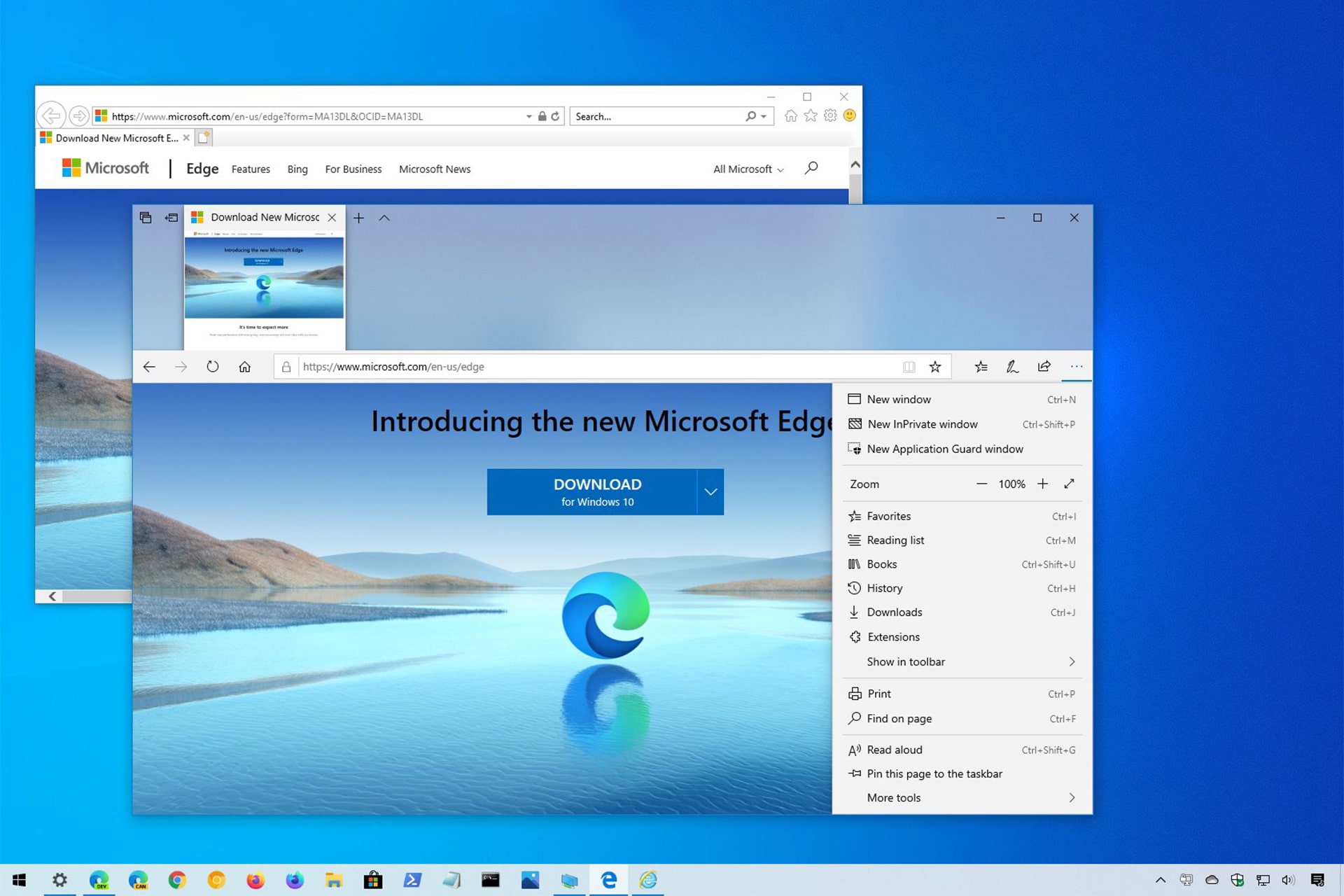
After Microsoft failed again in the browser market, the company introduced a new browser based on the Chromium open source project, and finally Edge Chromium was released in 2019. Currently, Redmond’s new browser has managed to gain a 10% share of the market in a relatively short period of time and become the second desktop browser after Chrome. Edge browser experiences a growth of 0.42%, which is more than any other browser.
Windows as a Service (2015 until now)
One of Microsoft’s ideas to change the business attitude and also the position of its most important product, Windows, was to introduce Windows as a service. So that Windows 10 was called the last version of Windows and Windows as a service was born so that instead of introducing a new version, Windows will continue to grow with annual updates.
But it seemed that Microsoft is not very determined in its path and this company did not give much proball to Windows service. For example, the Office 365 service, which currently operates under the name Microsoft 365, has a separate section to show the status of service problems. Therefore, users can check the health status of their service at any time by checking this site.
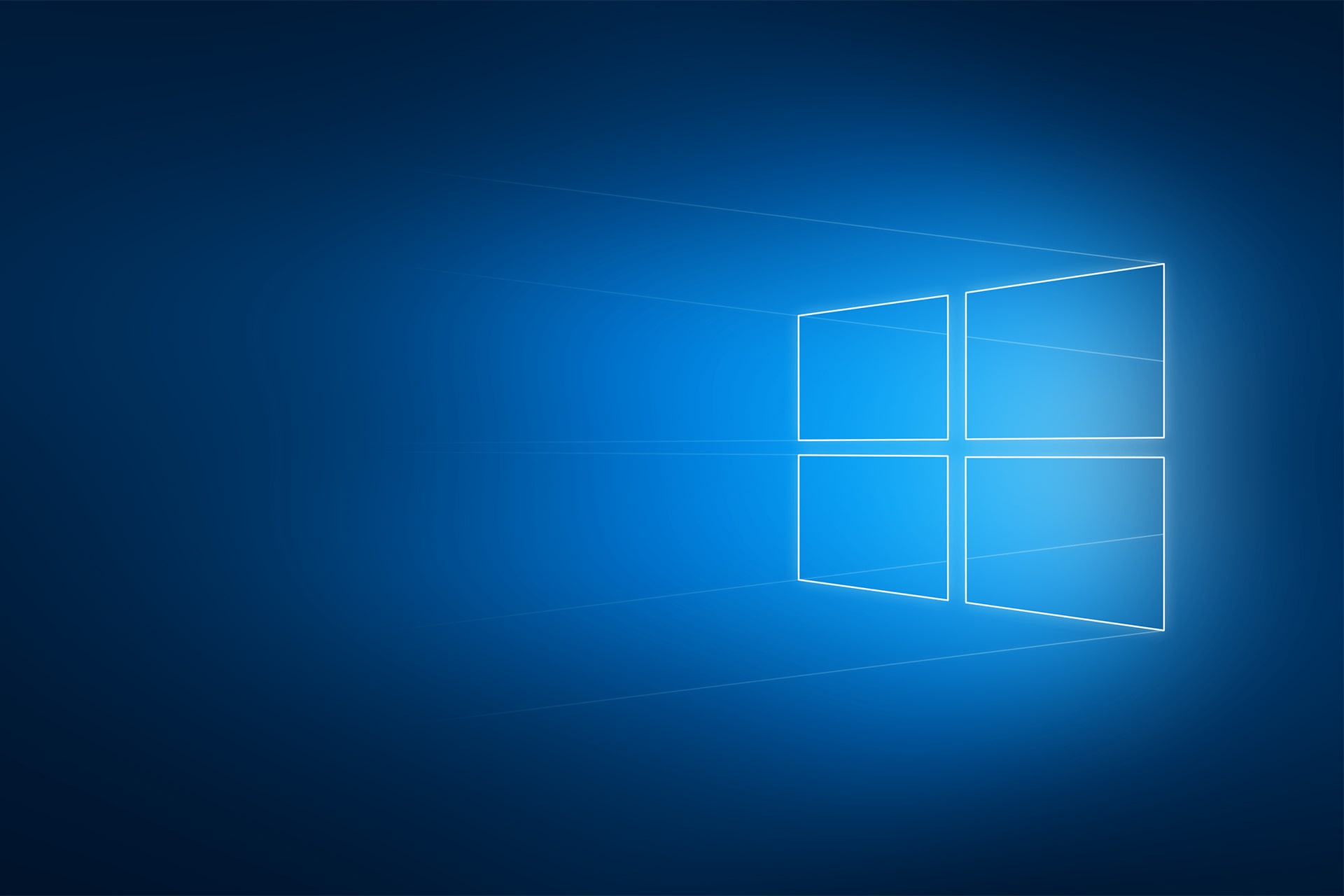
In fact, the main problem of Windows is the lack of a dedicated section to monitor the status of current Windows problems; A topic that makes users spend hours searching and talking about their Windows problems in forums to find a way to solve the problem.
The world’s software giant has still failed to offer Windows as a service, and even with Windows 11, and a change in company policies, there is a possibility of the project being completely canceled. Despite the fact that there is no word from the company about canceling the project; But we decided to list the Windows as a service project as one of the failures of the Redmonds due to its uncertain future and Microsoft’s meaningful silence.
Smart Speaker (year 2017)
In the long list of Microsoft’s failures, along with the health band, smartphone, Zune players, Kinect and many others, the smart speaker is also visible. Of course, in the Cortana section, we made a small mention of smart speakers, and now we will go into a detailed explanation of Redmondi’s failure in the smart speaker market.
In fact, Microsoft’s failure in the world of smart speakers is not so long and the Redmond giant failed only in its first attempt to enter this market. The story goes back to 2017. Harman in collaboration with Microsoft introduced a smart speaker called INVOKE, whose artificial intelligence power was provided by Cortana’s intelligent voice assistant.
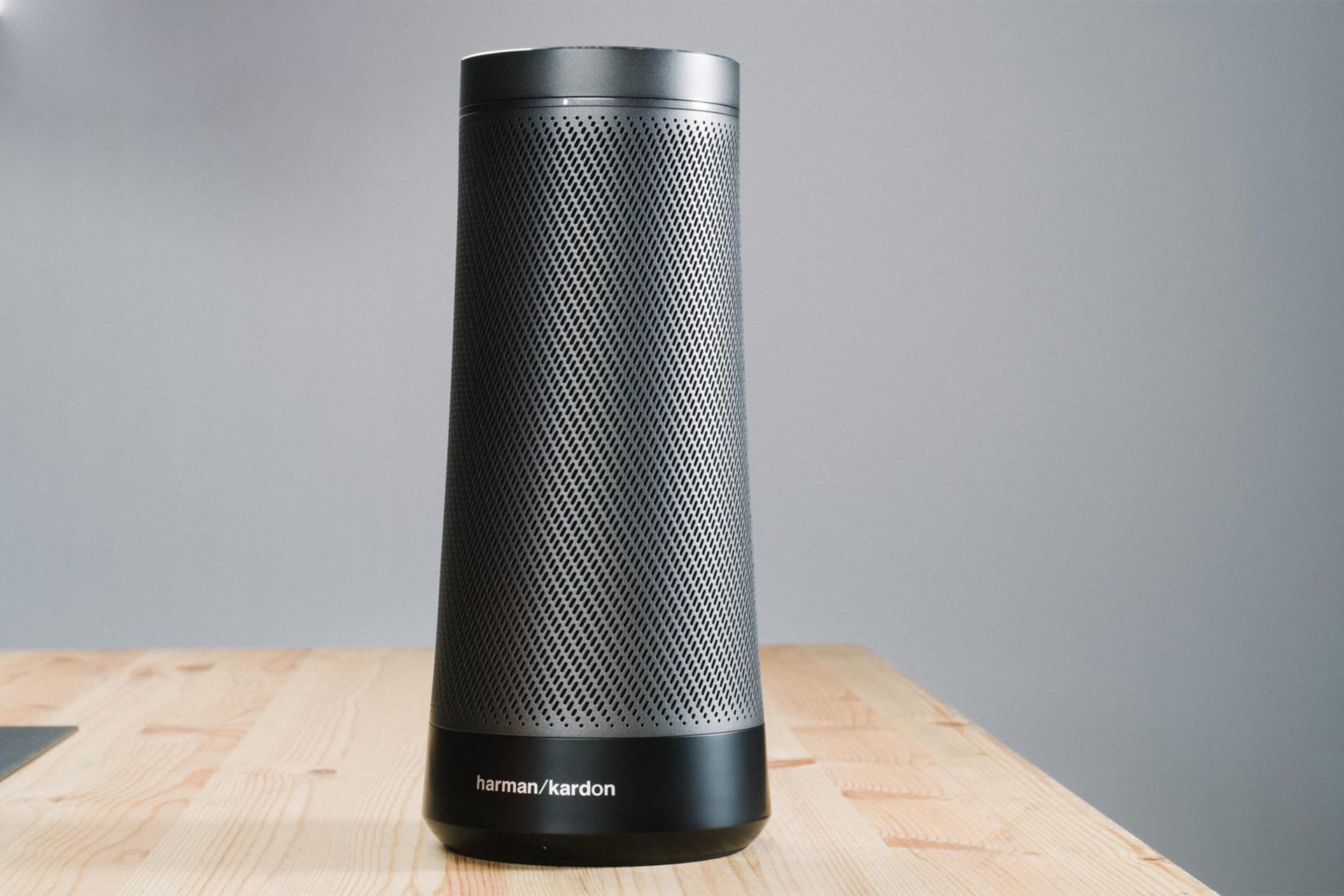
As a simple speaker, INVOKE was equipped with 3 tweeters and 3 woofers and was used as a Spotify music player through Spotify Connect. In a word, INVOKE’s 360-degree sound was excellent and provided the listener with an extraordinary quality. But the problem started with the $200 price of the device and the low willingness of users to use Cortana’s voice assistant.
Cortana was smart, but in terms of skill, it was still a step below its competitors, Google’s voice assistant and Amazon’s Alexa. On the other hand, the high price of the device made users move towards cheaper devices such as Amazon Echo and Google Homne. All critics called the INVOKE speaker a valuable and high-quality device; But that wasn’t what drove users to buy it. Therefore, in 2019 and two years before the official announcement of the end of support for Cortana in the INVOKE speaker, Microsoft sent a $50 gift card to its owners to somehow announce its poor support and the end of Cortana development. Finally, in July 2020, the end of Cortana development for smart speakers was announced, and in 2021, with a software update, Cortana was completely removed from the INVOKE speaker to become a simple speaker.
Embarrassing mistakes
In addition to Microsoft’s long list of failures, the Redmonds have an almost huge collection of mistakes in their repertoire that is worth checking out. In fact, this section is dedicated to products that did not suffer failure and only because of wrong decisions, eventually became a big lesson for managers and other company members.
Windows ME (year 2000)
Windows ME was introduced at the end of 2000 and is one of the worst Microsoft products in the company’s history. Microsoft believed Windows ME (abbreviation of Millennium Edition) to be an advanced version of Windows 98 that offered higher speed and stability. This version was supposed to be a special version of Windows 98 and, as the name suggests, it was a version prepared for the new millennium.
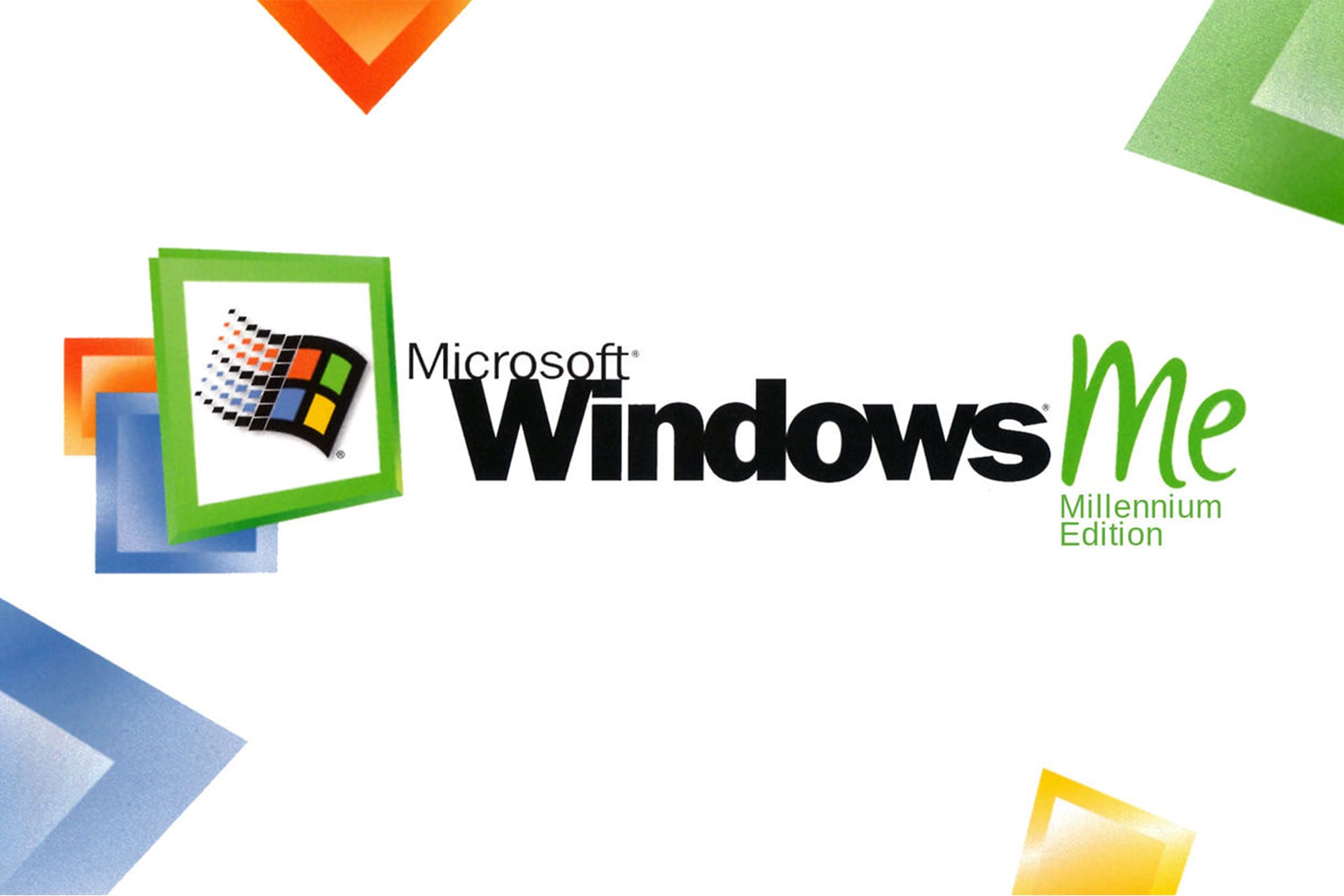
But in practice, ME became a complete disaster and after numerous crashes and problems surrounding the support of previous software, it was quickly removed from Redmondi’s agenda, and after only one year, its support was completely stopped. To make up for their mistake, Redmondi introduced Windows XP a year later in 2001, which became one of the most popular versions of Windows, unlike Windows ME.
Internet Explorer (year 2001)
Internet Explorer is not a failed product per se, and that’s why it belongs in the category of embarrassing mistakes. As mentioned in the Edge section, Internet Explorer had 95% of the browser market at its peak. In fact, IE was used in every computer and users enjoyed working with IE.
The main reason for the downfall of IE was Microsoft’s wrong decisions regarding this popular browser. In fact, the Redmonds were intoxicated by the great success of this browser and, ignoring the browser market and the emergence of new and powerful competitors, refused to update IE and add new features. Of course, the main reason for the growth of IE and the failure of Netscape was its default release with Windows, and Microsoft thought that users would not bother to install the new browser.

IE was very slow and loaded websites much slower than Chrome or Firefox. In addition, with the development of the Internet, the desire to download had also increased, and IE even suffered from the lack of a good and practical download manager. Finally, IE became the browser through which users downloaded other browsers.
Linux is cancer (2001)
Steve Ballmer, the former CEO of Microsoft, had many controversial opinions during his administration. One of these controversial comments of Ballmer dates back to 2001. When he described Linux as a “cancer” in an interview with the Chicago Sun-Times magazine.
Linux is a good competitor for us. This operating system drives us to innovate and enables us to price our products based on our product features.
Open source software cannot be used by commercial companies. According to the written license, if you use a text game program [in your software], you must open source your program. Linux is like a cancer that spreads its possession to everything it touches. This is the license [Linux].
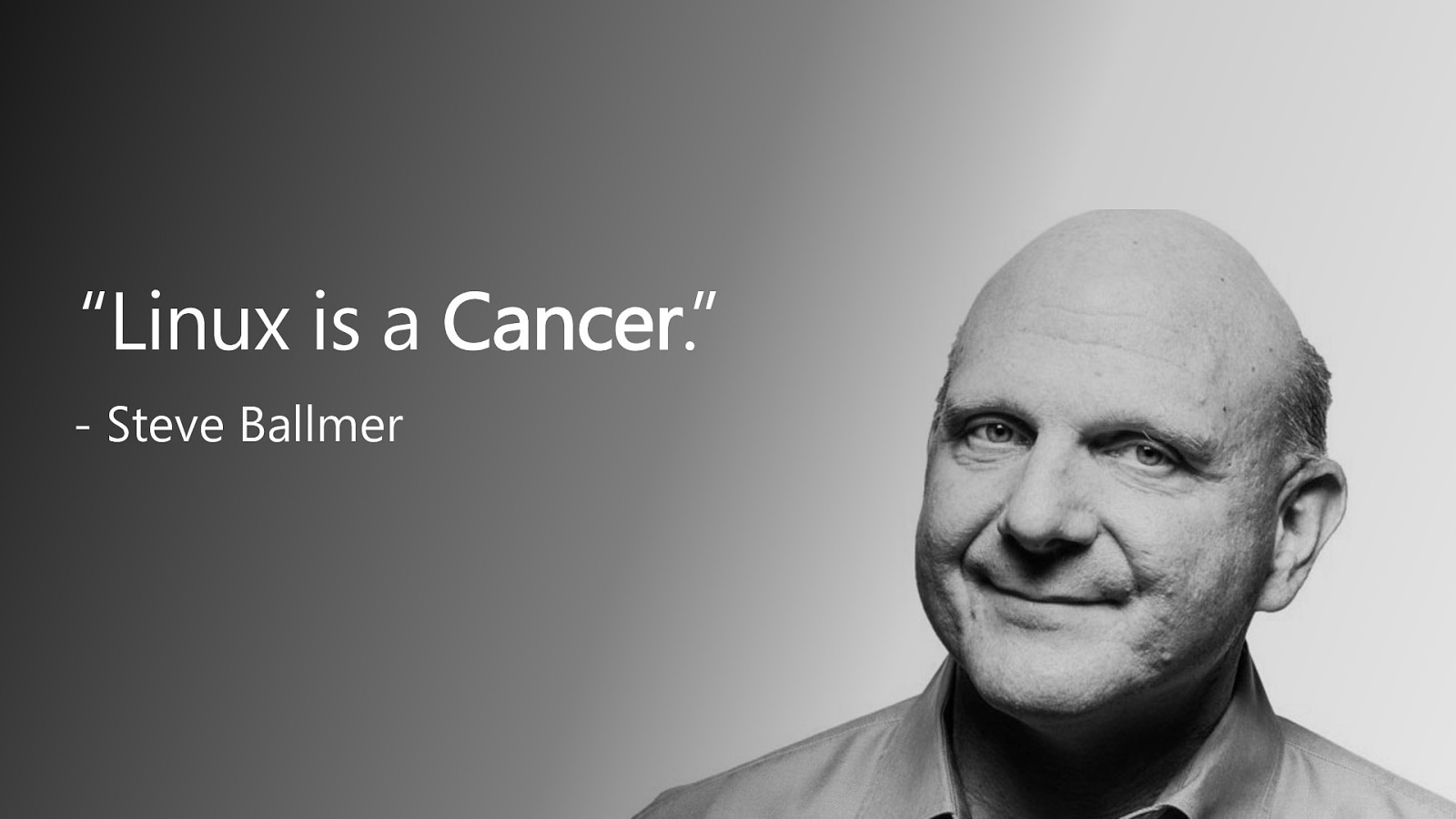
These talks caused Microsoft to become a hated face in the minds of users of the free software community in a short period of time. Even those who used commercial software, but in their minds considered free software as a way to reach the utopia of the technology world, also hated Microsoft.
But with the arrival of Satya Nadella, Microsoft changed its attitude towards Linux and gradually moved closer to the free software community with the slogan Microsoft ❤ Linux. The company even added Linux support to Windows in order to attract more users from the competing platform to Windows. Currently, Windows 11 is even able to run Linux software graphically in the form of Windows Subsystem for Linux. This means that all the UI of the software will be displayed in Windows in the same way as it is in Linux (for example, the window control buttons are reversed).
Steve Ballmer’s controversial comment dealt a big blow to Microsoft’s image as the world’s software giant, and the company’s change of practice in making a person interested in Linux can show the magnitude of this blow.
Windows Vista (year 2007)
The development of Windows Vista started 5 months before the general release of Windows XP, i.e. in 2001, and it started in the form of a project called Longhorn. Initially, the next generation was supposed to be similar to Windows XP and bring new features such as widgets, advanced search and many other things; But as the Longhorn development process was prolonged and the Redmonds changed their attitude towards the next generation of Windows, the company finally decided to start the Windows Vista project.
Finally, Windows Vista was released in 2007 and was not similar to Windows XP. Microsoft had developed a completely modern and new operating system called Aero, a glass design language that the general public was not familiar with. In addition, the need for powerful hardware for an enjoyable Vista experience made it a cancer for Microsoft. Everyone was talking about Vista and its slow and annoying performance. The hardware didn’t even support Windows Vista for a wide range of users. For example, the RAM needed to run Windows XP was equal to 128 MB, which was increased to 1 GB in Vista. Of course, this 1 GB was not enough to run the operating system properly!
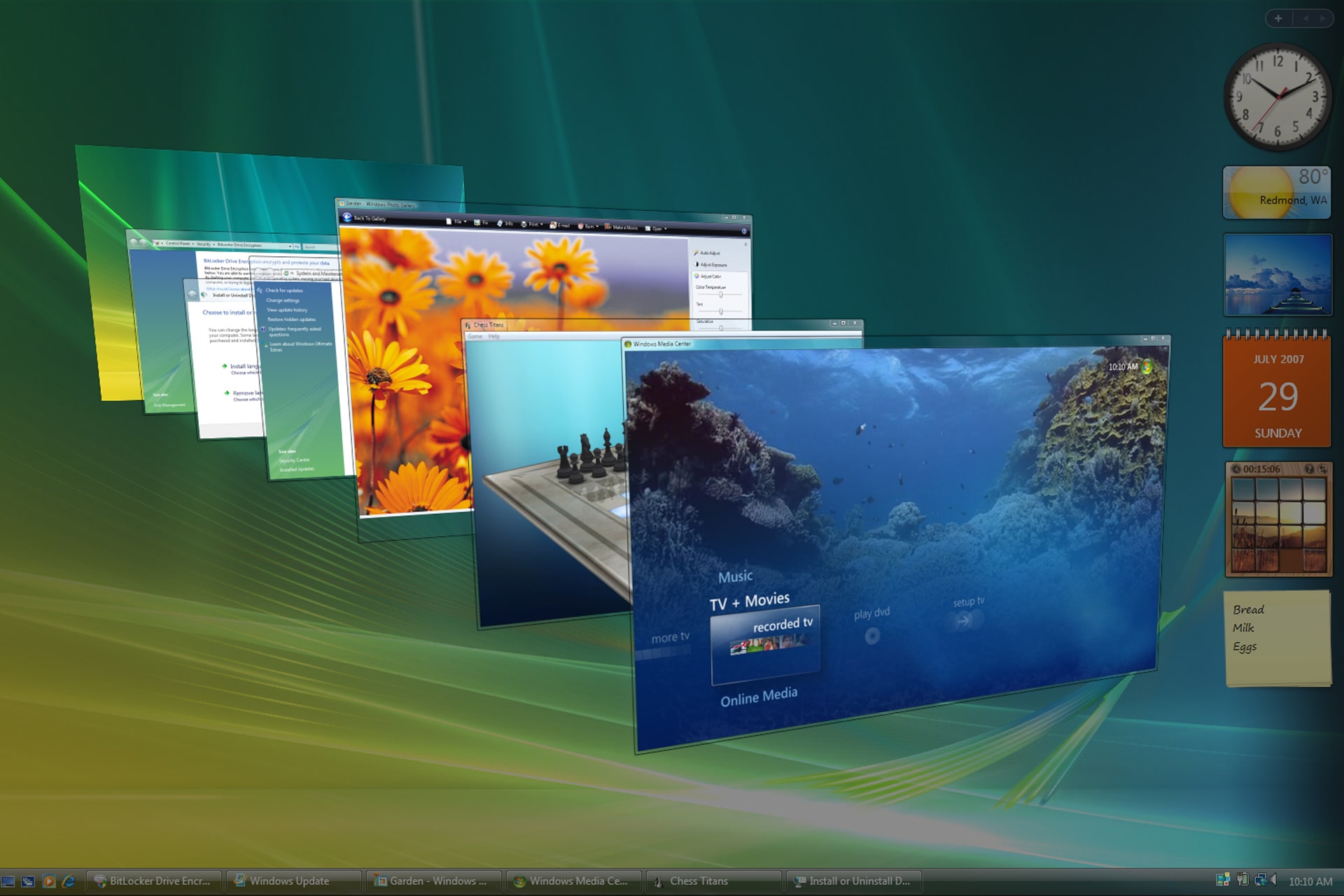
The problem did not end there, and in 2008, with the release of the first Vista service pack, many devices faced reboot problems. All these things led Microsoft to publicly release Windows 7 just 2 years later in 2009. Of course, the support for Windows Vista continued until 2017, and Redmondi solved its problems to a large extent by releasing Service Pack 2 as well as numerous security updates. But in the end, the hasty release of Vista caused it to become a big mistake on the part of the Redmonds.
Windows 8 (year 2013)
It seems that the syndrome of intermediate versions of Windows is a real thing; Because with the release of Windows 8, this issue was proven to everyone. Simply put, Microsoft’s Windows 98 was a success and sold very well; But Windows Me was not like that. Windows XP was great and Windows Vista was a big failure! The release of Windows 7 was considered a great success for the people of Cupertino, but Windows 8 was a controversial version of Windows that was unusable for many users.
The problem started with a controversial decision. It’s no secret that Microsoft has a great vision; To complement this claim we can count on the Zune subscription service, the attractive Windows Vista user interface, the Xbox online service, two-in-one tablets and many more. But another major problem that Microsoft is struggling with is being ahead of its time; The incident that turned the thinking behind Windows 8 into a bad idea.
Microsoft saw the future in touch-based computers and believed that Windows should also keep pace with touch input. The result of this thinking was Windows 8, which used the Metro user interface. Windows 8 was great for touch devices, and with advanced gestures, everything was done with just a swipe; But in the meantime there was a problem: there was no permanent start in Windows 8!

Start in Windows 8 was full screen and displayed large tiles with sharp corners. On the other hand, when entering Windows, Start was displayed instead of the desktop, and this confused many users. To enter the desktop, you had to click on the Desktop tile, and there was no start button (Windows logo) to enter the start.
In Windows 8, Redmondi had connected two different worlds; Metro’s user interface, which was completely touch-based, and the traditional Windows user interface, which was completely mouse-oriented. In addition, touch gestures were also available through the mouse, and you had to go through complicated and long steps to perform a series of tasks, such as showing the Charm Bar and accessing settings. An incident that was unpleasant for a wide range of users. On the other hand, it was not possible to use the device completely by touch. For example, to manage files, you had to use Windows Explorer on the desktop, which lacked any gestures, and for simple tasks, you had to use difficult and complex gestures.
Windows 8 was neither fully touch nor fully developed for desktop computers. These inconsistencies and the not very attractive user interface prevented users from moving to Windows 8, so that the Redmonds once again faced the same challenge as Windows Vista.
Not quite touch, not quite desktop; An incomplete experience of both worlds
On the other hand, Windows 8 software store software was very limited and did not include many games and programs. Microsoft even introduced a version called Windows 8.1 in 2013, in which many problems such as the absence of the Power button and the difficulty of accessing the Settings button were fixed. Even the Redmonds brought back the start button; But it was too late and users did not want to use Windows 8. Finally, the software giant quickly started the Windows 10 development project and requested all users to participate in the development of the next version of Windows during a program called the Insider Program.
In 2013, the use of touch screens and touch-based Windows computers was not very popular, and even in 2022, many users prefer to use a mouse to interact with Windows. The truth is that the original idea of Windows 8 was far ahead of its time and combining it with the traditional Windows user interface and forcing users to use the full screen start and tiles was not considered suitable for a popular product like Windows. It would have been better if Windows 8 included a touch version and a non-touch version so that each one could be used easily depending on the user of the device. The idea that caused Microsoft to start the Windows Core OS project, which was mentioned earlier in the Surface Hub section.
Xbox The Duke controller (year 2001)
The first version of Xbox was a revolutionary product from Microsoft. After many struggles, the software giant finally launched its first gaming console in 2001, in the sixth generation of game consoles. But what attracted a lot of attention was not the console itself but its huge controller called The Duke. Even in the 2008 Guinness Book of Records, The Duke was mentioned as the largest game controller.
In 2003, a modified version of The Duke called Controller S was introduced, which was both lighter in weight and smaller in size. All consoles released since 2003 have had the S controller in their box instead of The Duke.
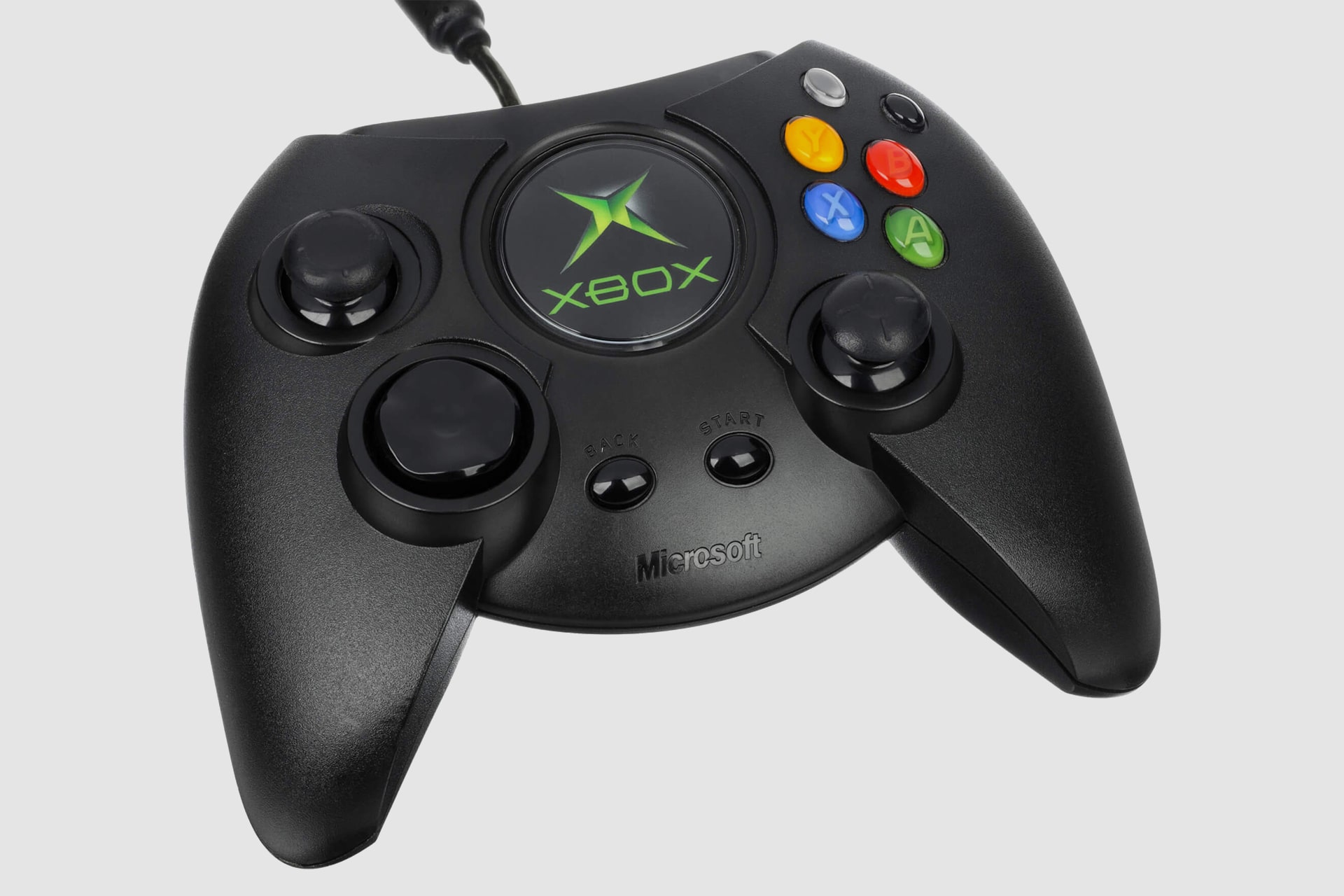
Due to its size, the Duke controller became a nostalgia for Xbox users, and Hyperkin, knowing this, relaunched the Xbox One and Windows version in 2018 in collaboration with Microsoft.
But why was Duke so big? At the same time as the design of the handle, its board was also being produced and despite Microsoft’s request to use DualShock 2 controller board technology to make the board smaller, the manufacturing company refused to do it, and this made it with such a large design. face to face
In fact, the reason for naming the Duke controller was to offer such a large handle with the console; An issue that seemed to be a mistake from the very beginning.
Xbox One (2013)
2013 was a bad year for the Xbox brand. Former head of Microsoft’s gaming brand, Don Mattrick, envisioned the next-generation Xbox as an entertainment-centric home device. Following this decision, connecting Xbox One to the Internet was necessary, and physical games could not be transferred to another person. In addition, the Xbox was equipped with a TV receiver input and it was possible to convert it into a digital TV receiver. But the shot was fired with the mandatory purchase of the second generation Kinect along with the console to Xbox One. This decision made Microsoft’s 8th generation console $100 more expensive than the Japanese competitor console. The strange thing is that no version without Kinect was released.

Although the Xbox 360 was a complete win for Microsoft, but the wrong decisions regarding the Xbox One and as a result its sales decreased, the 8th generation Xbox console turned into a big failure; So that the sale of this console, including Xbox One, One S, One X and One S digital, was only 51 million copies; Less than half of the total sales of PS4! This is despite the fact that a total of 84 million copies of Xbox 360 were sold! In fact, the decrease in sales of Xbox One caused the increase in sales of PlayStation and the influx of Xbox 360 users to Sony’s gaming ecosystem.
The wrong decisions towards Xbox One caused the Xbox brand to go to the brink of closure due to its loss. But with the dismissal of Don Matrick and under the leadership of Phil Spencer, we have seen the growing growth of Microsoft’s gaming brand. Of course, this company is still struggling with various problems in the field of first-party games, which this article cannot explain.
Surface Duo (year 2020)
The first generation Surface Duo was a total disaster for the reasons mentioned in the Windows 10X section. Due to the lack of Andromeda OS operating system and the replacement of Android at the last moment, the Surface Duo user interface was full of bugs and even in the Zomit review, Mehrdad Isalo pointed out various aspects of the device and its annoying bugs.
Surface Duo was an attractive product; But an uncooked operating system and numerous bugs, as well as the lack of a high-quality camera, made it become a hateful device that was annoying to work with and spending several tens of millions to buy it did nothing but material damage.
In addition, Microsoft used Snapdragon 855 and Android 10 for Surface Duo; While other Android flagships were equipped with the Snapdragon 865 chip and Android 11 at the time of Redmond’s foldable phone release. The software giant even released the Android 11 update to device users in early 2022, and the release of Android 12 has also been pushed back to late 2022 due to a schedule change to use Android 12L. In such a situation and considering Microsoft’s very bad history of leaving its customers alone, few people had the courage to buy Surface Duo. Keep in mind that the price of Surface Duo in August 2021 reached less than $400!
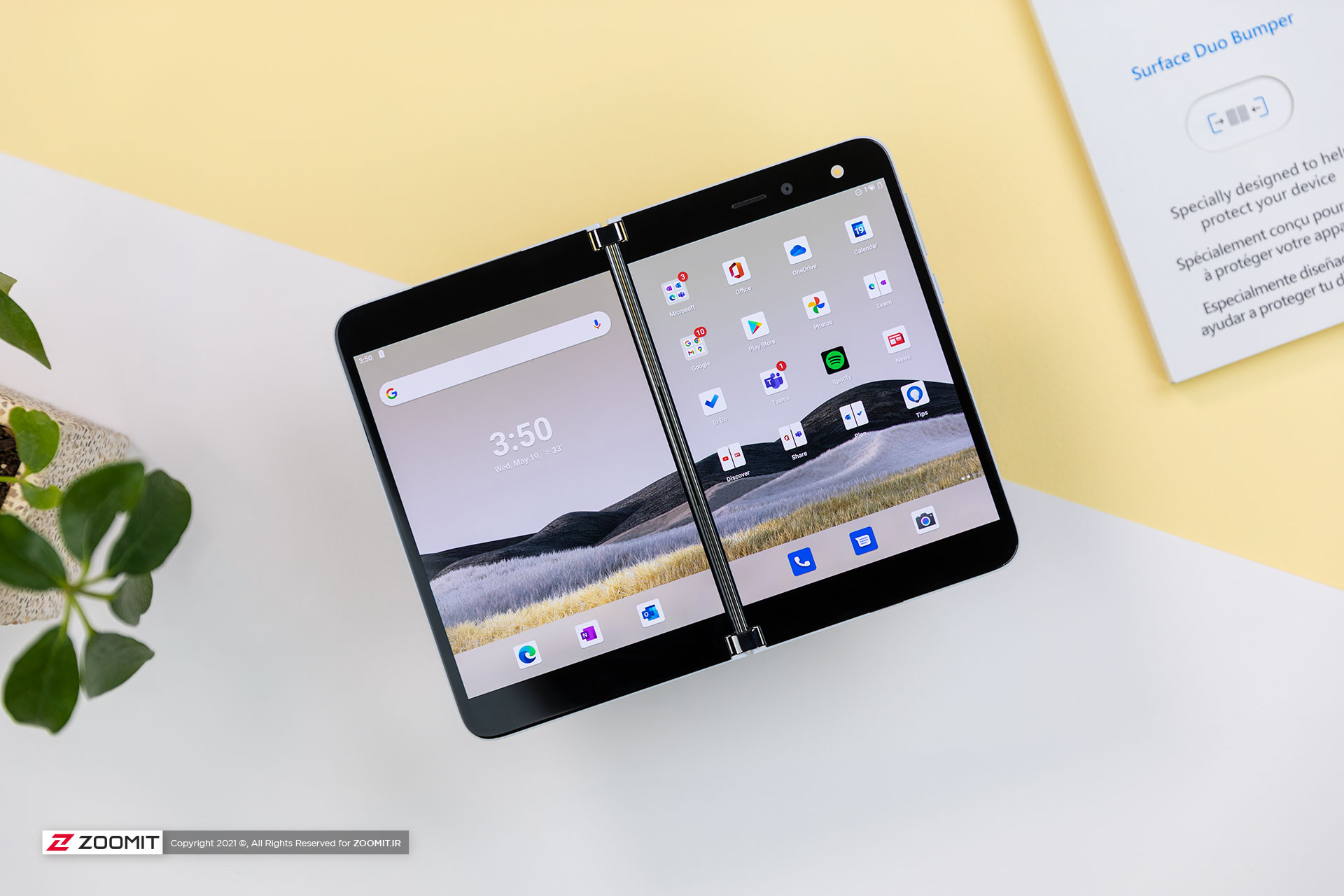
Although after 2 years, the condition of Surface Duo is better than before and the Redmonds have managed to greatly reduce the bugs and problems of the device with numerous updates, but the value of buying the device is very high compared to Samsung’s representative, Galaxy Z Fold 3 and even 2. It was lower.
By hastening the public release of the device and making wrong decisions and replacing Android with Andromeda OS at the last minute, Microsoft released a device full of flaws and useless to the market and caused the public of users who were excited about the Surface brand and Microsoft logo mobile phones to be discouraged. become
Skype (2007)
Skype has a complicated and ups and downs fate. This company was founded in 2003 and became a billion dollar company in a short period of time. The growth of Skype was so fast that 2 years after its establishment in 2005, eBay acquired Skype for $2.6 billion. The number of Skype users reached more than 100 million in 2006; in 2006, a company named Silver Lake bought about 70% of Skype’s shares. A year later, in 2007, ownership of Skype was transferred to the Redmond giant for a whopping $8.5 billion.
From the beginning, it was clear that Microsoft paid a higher figure than the real value of Skype for its purchase, and some analysts said that the reason for this purchase was Microsoft’s fear of Skype being bought by Google or other competitors. However, Microsoft soon integrated its IM service called MSN Messenger (later renamed Windows Live Messenger) with Skype.
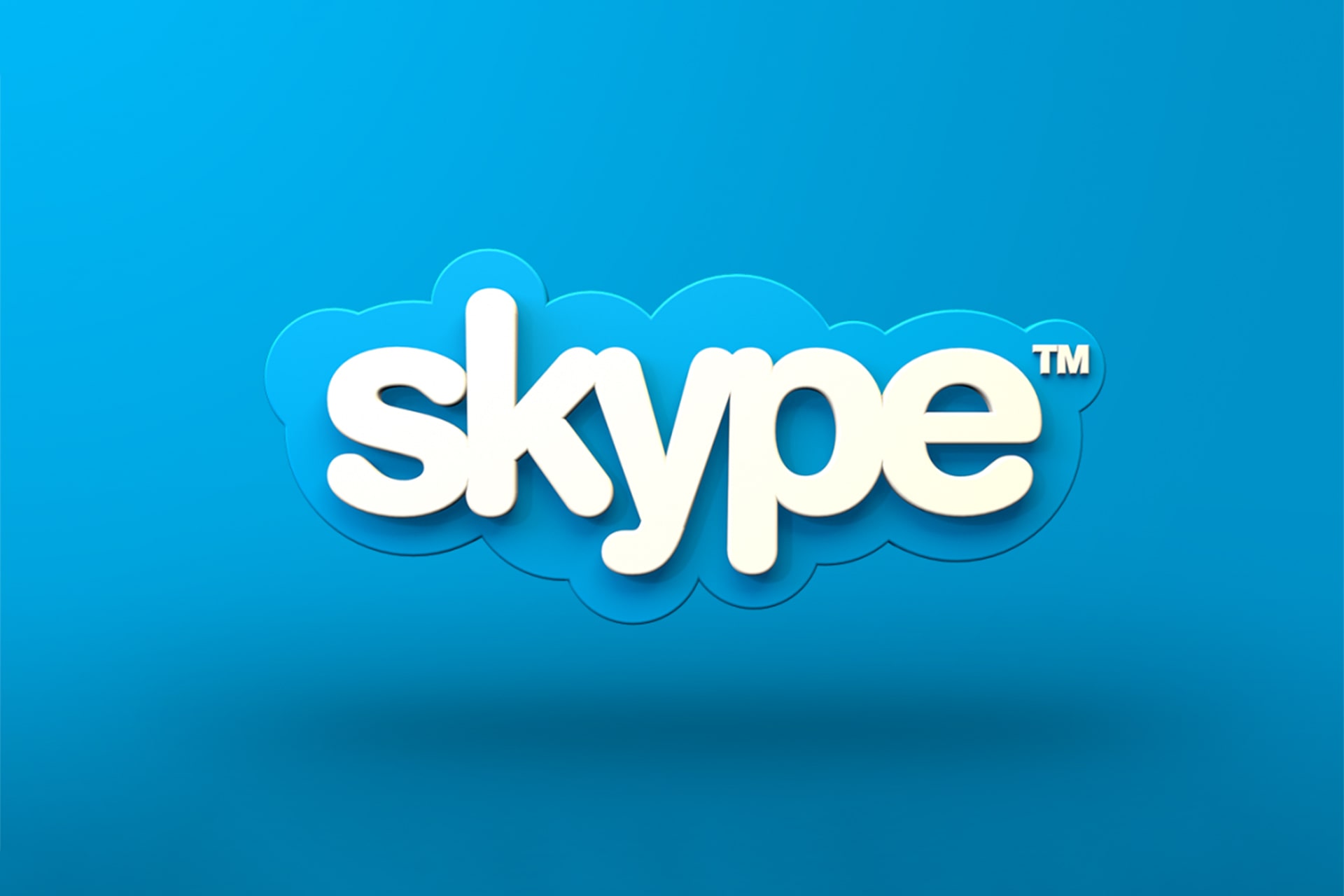
This merger caused Skype to lose its peer-to-peer nature and required Microsoft servers to make calls. As a result, all the users’ information had to pass through Redmondi’s server gate, which created concerns for some users.
In the continuation of the changes, the Redmonds changed the Skype user interface many times and the addition of various unused features caused users to be confused and as a result they moved away from Skype. Now, Skype, which was once happy with 300 million monthly users, reached 65 million daily users in 2020. Meanwhile, at the time of Microsoft’s acquisition of Skype, the then CEO of Skype announced something more than these numbers:
With Microsoft’s cooperation, we can accelerate the growth of Skype and bring it to the goal of one billion daily users.
The point is that the latest statistics related to active Skype users go back to 2016 and the Microsoft Build event, in which Satya Nadella stated that there are 300 million active users of this service. According to TechCrunch, Skype also had 300 million monthly users in 2019. Therefore, Microsoft’s audio and video calling service has not experienced much growth over the years.
Teams Personal (year 2021)
Microsoft Teams is a popular platform among corporate users; By using Tims, communication between members of organizations is easier. But along with Windows 11, Teams, whose philosophy was for organizations and companies, was placed in the taskbar in the form of a separate program called Teams Personal; This is while the Redmonds were able to do such a thing with Skype, which was more popular among ordinary users and this event could help its growth again.
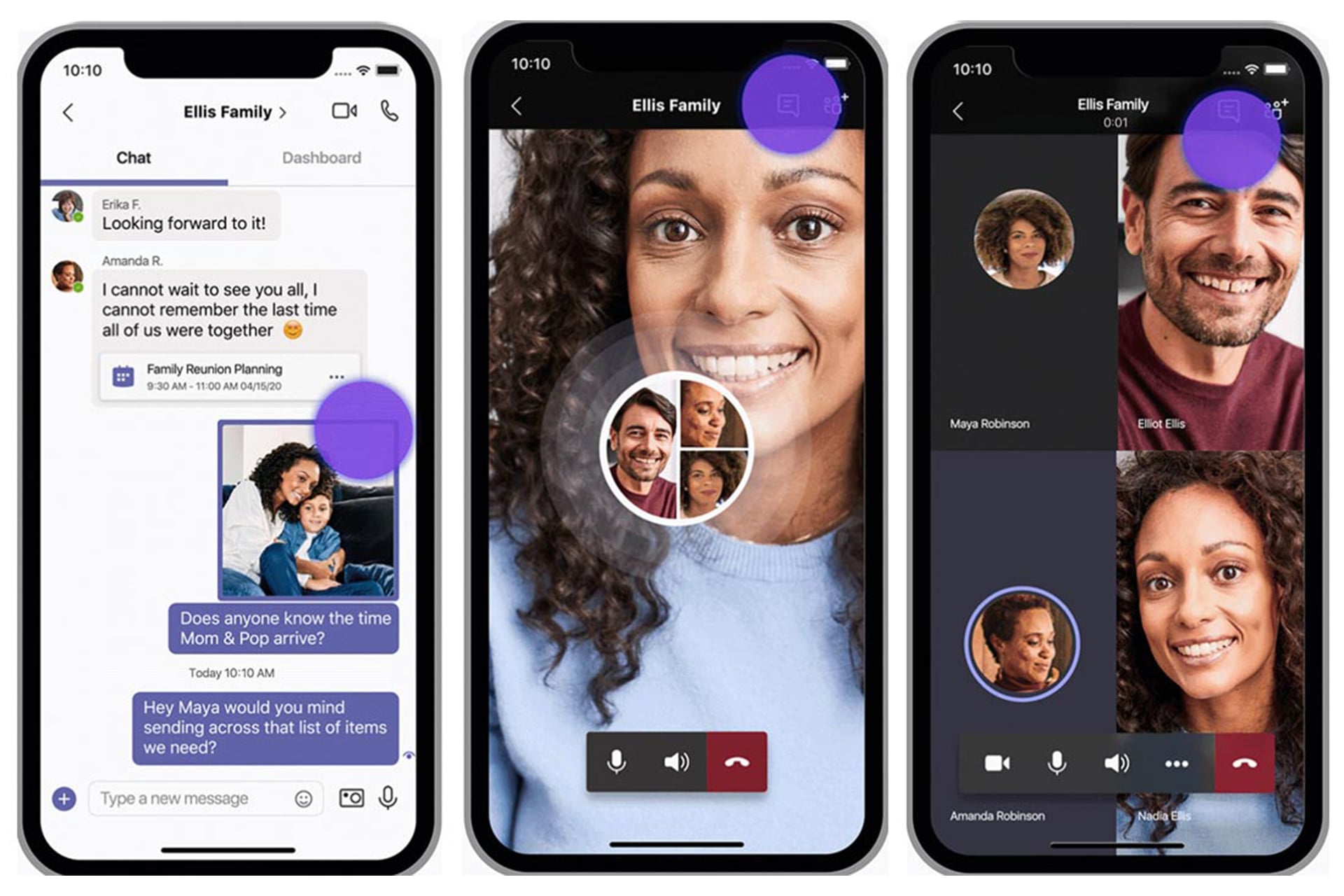
The strangest thing is that if you want to access both Tims accounts on your laptop, you must use two separate programs! All of this causes more confusion for users and as a result, the image of Teams is damaged among non-organizational users.
Red Ring of Death (2008)
Although Xbox 360 is a great success for Microsoft; But initially, a major problem occurred with its seventh-generation console, which put the Xbox brand on the brink. Just shortly after the Xbox 360 was released to the general public, users began to talk about a major problem: the Xbox light would turn red and stop working!
At first, it was thought that the problem was not so widespread, but quickly the reports of the red ring became more and more until Microsoft stopped the production of Xbox 360 to investigate the problem. After some time, it became clear that one of the vital parts of the device’s board burns after playing heavy games and the board gets hot. This causes the device to fail completely.

The red ring of death, the 1 billion dollar mistake of the Redmonds
Microsoft had to recall all defective Xboxes, and according to predictions, this recall cost Redmonds over a billion dollars! During a private meeting with Steve Ballmer, the then head of Xbox received the necessary funds to collect defective Xboxes to prevent the collapse of Microsoft’s gaming brand.
But why did we put this incident in the embarrassing mistakes section? In fact, the weakness of Microsoft’s quality control department and the checks before the mass production of the device caused such a big and damaging incident. If Microsoft had been a little more rigid in the development process of the device, the loss of 1 billion dollars and damage to the Xbox brand could have been avoided.
The use of iPhone by the head of Windows Mobile Department (2016)
One of Microsoft’s scandals dates back to 2016. When the senior vice president of Windows Mobile went on winter vacation, he received mixed feedback about his hair color change after posting photos on social media. But some users noticed that Joe’s tweets were published through iPhone! Simply put, the main face of Windows Mobile used the rival brand, Apple’s iPhone, instead of the Nokia phone (which was owned by Microsoft at the time).

Such an action is considered shameful by the vice president of Windows Mobile; Because it shows that even the heads of Microsoft are not interested in Windows 10 Mobile and Lumia devices.
After some time, Joe Belfiore, in response to negative feedback from users, announced that Microsoft executives may use their products to examine competing platforms in order to develop their own platform. But this answer was not enough for the users and in the end, such a decision was made by Microsoft and the Windows Mobile team.
Inconsistent Windows user interface (year 2000 until now)
If you are a Windows 10 user, you have probably noticed the inconsistency of the user interface of its different parts. For example, next to the new settings section, there is also the Control Panel, or the elements of Windows 98 can also be seen in Windows 10. This also applies to Windows 11, and Microsoft has failed to provide a unified user interface in all parts of its operating system.
This is while we are talking about a company that has extensive financial and human resources and can fix all these Windows inconsistencies with proper management. For this reason, the lack of uniform and integrated design in itself shows the weakness of management and the lack of coherent decision-making in Microsoft, and we consider this a great disgrace for the second most valuable technology-oriented company in the world.
Steve Ballmer’s prediction about the future of smartphones (2007)
After the introduction of the iPhone by the late Steve Jobs, Steve Ballmer, the then CEO of Microsoft, expressed his opinion about the iPhone in an interview as follows:
A $500 device that is sold on contract? In my opinion, [the iPhone] is the most expensive phone in the world, which will not be very attractive for corporate customers; Because it does not have a keyboard and is not very useful for email. Of course, maybe it will experience good sales, but we have our own mobile strategy and you can see wonderful phones equipped with Windows Mobile in the market. You can buy a Motorola Q phone right now for $99 that can play music, connect to the Internet, check email, and even use it to send instant messages (IM). I like our strategy for the mobile market.

Ballmer continues his speech:
We sell millions and millions of phones every year and Apple sells zero phones and in 6 months it will be Apple and a 500 dollar and expensive phone that you will see how the market behaves [meaning it will not experience much sales and will eventually fail. will be encountered].
But the foresight of Steve Ballmer as the CEO of the world’s largest software company was not very correct and they failed in the smartphone market after a short time and now they are trying to get a small share of the market with the Android operating system. But on the other side of the field, Apple earns billions of dollars annually with its small models and has an extremely important share of the market.
After reading all the items in this article, we can reach an important conclusion. Despite having huge financial resources, Microsoft still functions like a small startup and tries to make big changes through trial and error, not a coherent strategy.
On the other hand, despite the milking cows such as the cloud sector as well as Windows, it is not very important for the Redmonds to fail in the mobile market or to spend huge costs and ultimately to fail the project. Besides, Microsoft is one of the biggest technology companies even now and doesn’t feel much reason to get bigger.
Another thing is the extraordinary foresight of this company, which makes the introduced products not worth much at the time, and after many years have passed, their real value will be determined. Many cases exist for this claim, as we mentioned in the article. Like choosing ARM as the future of Windows tablets, bringing the voice assistant to Windows, or even producing 2-in-1 devices like Surface Pro.
Microsoft even failed on the Zune subscription platform due to early delivery. While in 2022, all services, from Netflix to Spotify, etc., will be offered in a subscription way.
Finally, we must mention some important successes of Microsoft, one of which is the Xbox brand. In addition to this brand, we can mention Windows itself as a platform that supports all programs from the year 2000 and even before that and has not left any user alone. Xbox Live online service, Azure service, Teams service and many others are among the great successes of Microsoft.











